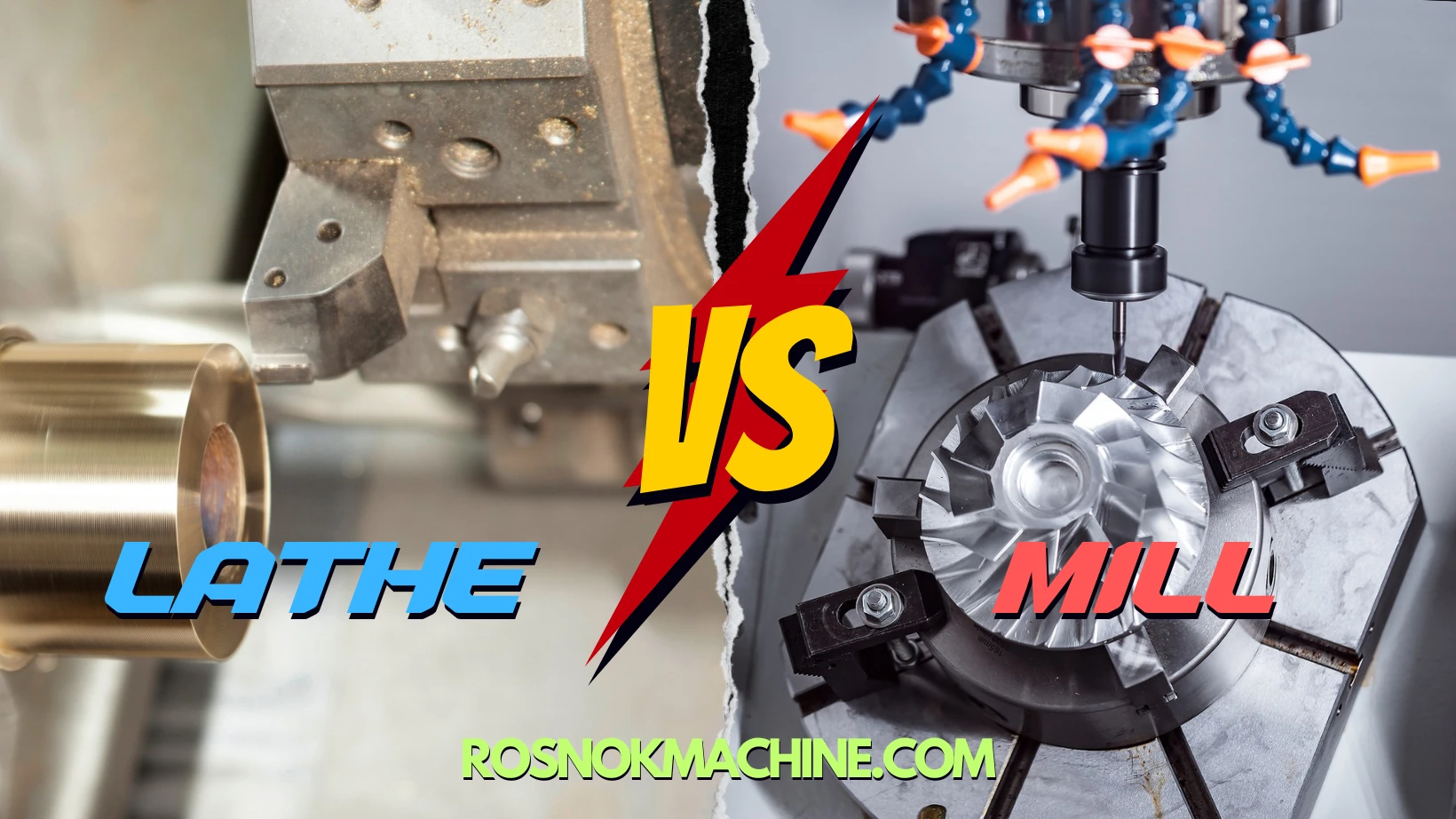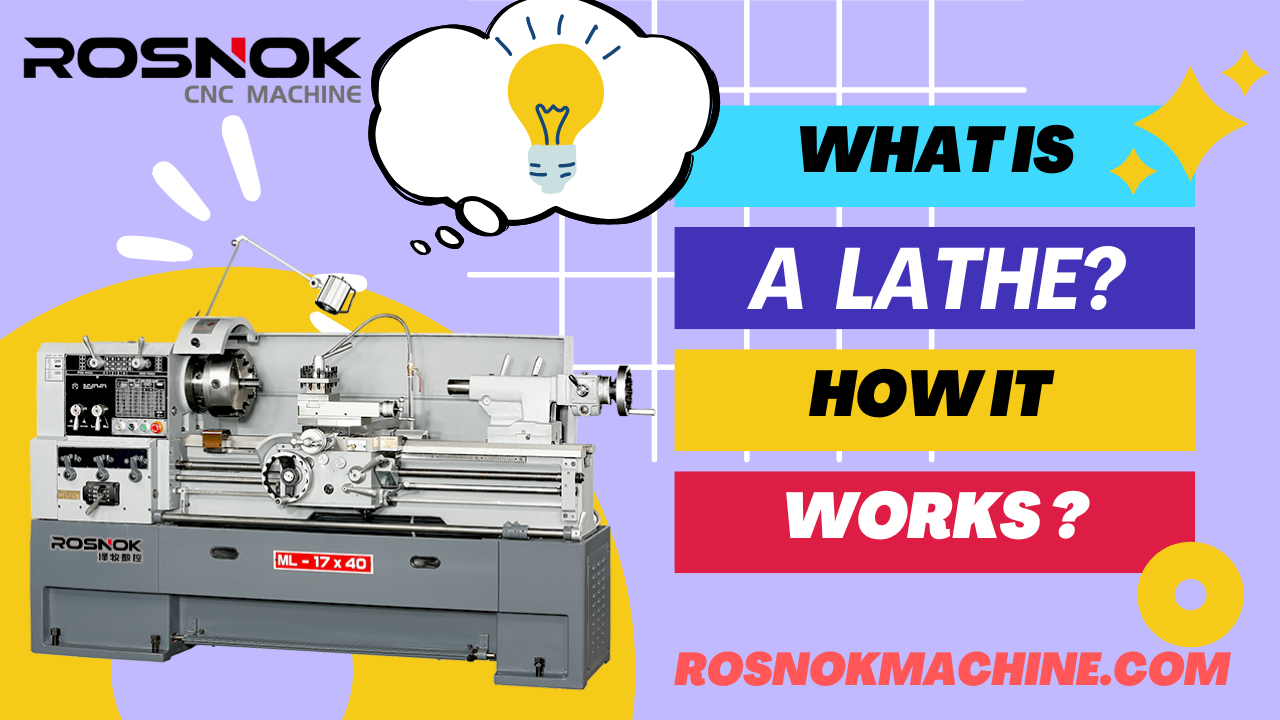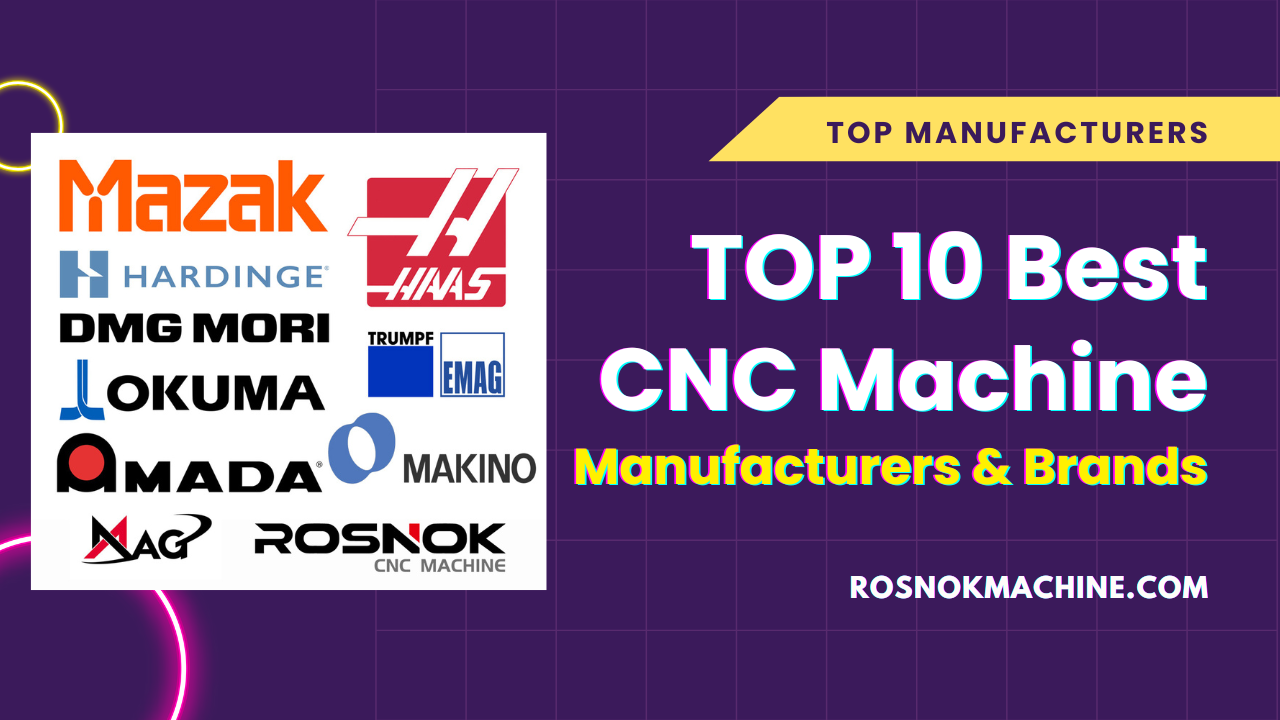You’ve probably heard the term machining, but what does it really mean? Why do factories, engineers, and industries rely on it every day? Without understanding machining, you’re missing the foundation of modern production. Don’t worry—this article will guide you through it all, in clear, simple terms made for everyone.
Machining is a subtractive manufacturing process in which excess material is removed from a solid workpiece to achieve a desired shape, size, or surface finish. It involves various mechanical operations such as cutting, drilling, turning, milling, and grinding. By using tools that physically contact the workpiece, machining can produce highly accurate parts from metals, plastics, and other materials. This process is widely used across many industries to manufacture both small precision parts and large-scale industrial components.
Continue reading to learn the definition of machining, its core processes, common tools, key materials, industrial applications, and how this vital manufacturing method continues to evolve today.
What Is Machining?
Machining is one of the most essential processes in manufacturing, yet it’s often misunderstood. This section will help you grasp what machining really is, how it differs from other production methods, and why it’s so vital to modern industry.
The Basic Definition of Machining
Machining refers to a group of subtractive manufacturing processes in which material is removed from a solid workpiece to produce a component with defined shape, dimensions, and surface finish. The term encompasses various mechanical operations such as turning, milling, drilling, grinding, and sawing, each using cutting tools to eliminate unwanted material. These operations are commonly performed using advanced equipment like CNC machines, which automate motion and precision. To define machining accurately, it is the act of physically transforming raw stock—metal, plastic, ceramic, or composite—into a finished part by cutting away excess material.
Machining stands out for its high accuracy, repeatability, and compatibility with a wide range of materials. Whether you’re working on metal machining, machining nylon, or ceramic CNC machining, the underlying principle remains the same: remove what’s not needed to reveal what is. Unlike forming or joining methods, machining allows for extremely tight tolerances and custom geometries. This capability makes it indispensable in industries where precision cannot be compromised, such as aerospace, automotive, and medical device manufacturing.
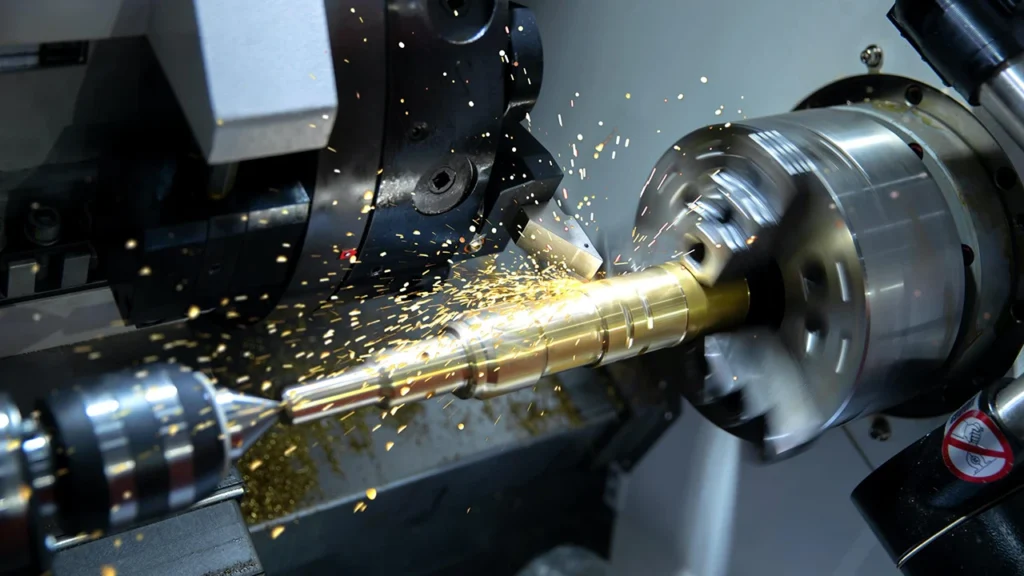
Machining vs. Other Manufacturing Methods
Compared to other manufacturing approaches, machining offers superior control, precision, and flexibility. In additive machining or 3D printing, material is added layer by layer, which may be efficient for rapid prototyping but often lacks structural density and surface finish. Casting and forging are effective for producing rough or near-net shapes at scale but are typically followed by precision machining to achieve final tolerances and finishes.
Machining is also superior in handling difficult materials. Processes like grind machining, wire discharge machining, and EDM machining can shape hardened metals, heat-sensitive polymers, and advanced alloys that are nearly impossible to form through traditional means. Moreover, zero tolerance machining is required in critical components such as engine parts, surgical instruments, and aerospace brackets—fields where failure is not an option.
Another key difference lies in versatility. Machining supports both custom CNC machining for one-off parts and automated machining for mass production. Whether you’re working with machining titanium or machining pipe threads, the ability to adjust parameters, tooling, and sequences gives machining a level of adaptability unmatched by most other processes.
Why Machining Matters in Manufacturing
Machining plays a central role in almost every modern manufacturing sector. From automotive machining lines producing millions of engine parts per year to aerospace machining crafting high-tolerance turbine blades, it’s hard to find a precision product untouched by a machine tool. It enables custom CNC machining for small-batch innovation as well as industrial machining for scalable output.
This significance grows as industries demand more from their products—higher durability, lower weight, better efficiency. With tools like 5-axis CNC machining, cryogenic machining, and computer-aided machining, manufacturers can now produce parts with intricate geometries and micron-level accuracy. Even in high-risk environments such as oil & gas, machining welds, machining pipe threads, and large-scale components rely on precise control only machining can provide.
Furthermore, machining continues to evolve with sustainability in mind. Techniques like green machining reduce waste and energy usage, aligning with global eco-standards. Whether creating a prototype, finishing a forged part, or crafting the internal cavity of a medical implant, machining delivers the performance, consistency, and future-forward capability that make it irreplaceable in modern production.
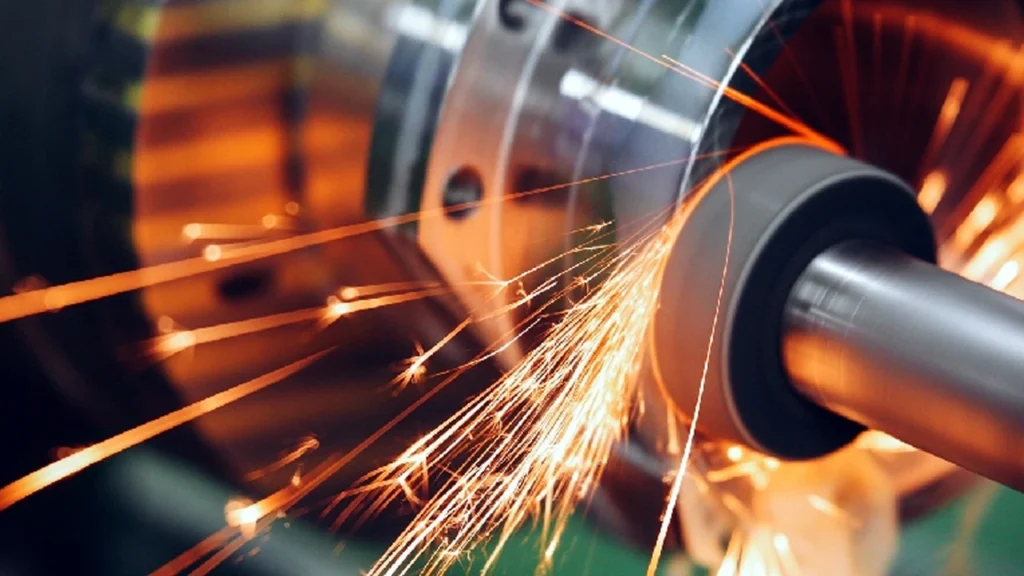
A Brief History of Machining
Machining didn’t emerge overnight—it has evolved over centuries through the convergence of craftsmanship, metallurgy, and technological innovation. This section explores the origins of machining, the turning points that shaped its development, and how it transitioned from manual artistry to today’s automated precision systems.
Early Origins and Manual Machining
The roots of machining can be traced back to ancient civilizations, where primitive lathes and hand tools were used to shape wood and soft metals. In Egypt around 1300 BCE, bow drills were already employed to bore holes in jewelry and small artifacts. However, these were not machining systems as we understand them today, but rather early examples of subtractive shaping.
The true beginning of manual machining as an industrial process emerged in the 18th century during the early stages of the Industrial Revolution. Craftsmen began developing lathe-like devices that used human or water-powered mechanisms to perform turning and shaping tasks with greater consistency. By the late 1700s, the first screw-cutting lathes appeared in England, marking a major milestone in machining history—the ability to produce standardized parts.
During this era, machinists relied heavily on precision measurement tools like micrometers and calipers, introducing the foundations of precision engineering. These manually controlled processes were still labor-intensive and skill-dependent but laid the groundwork for mass production and interchangeable parts in the 19th century.
The Birth of Mechanized and Industrial Machining
As steam power and later electricity became widespread in the 19th century, machining technology underwent a dramatic transformation. Mechanized lathes, milling machines, and grinding equipment became common in factories, allowing more complex parts to be manufactured at larger volumes and with greater accuracy. This marked the transition from artisanal shop work to true industrial machining.
In 1942, American engineer John T. Parsons, in collaboration with MIT, initiated the development of the first numerical control (NC) system. This was the forerunner of what would become CNC machining, allowing machines to be programmed using punch cards and eventually digital code. This innovation was a turning point—not just in machining, but in global manufacturing—ushering in the age of automated machining.
By the late 20th century, machining centers evolved into multi-axis, computer-controlled platforms capable of performing multiple operations (like drilling, turning, and milling) in a single setup. This not only improved productivity but also enhanced accuracy, enabling consistent zero-tolerance machining even for highly complex geometries.
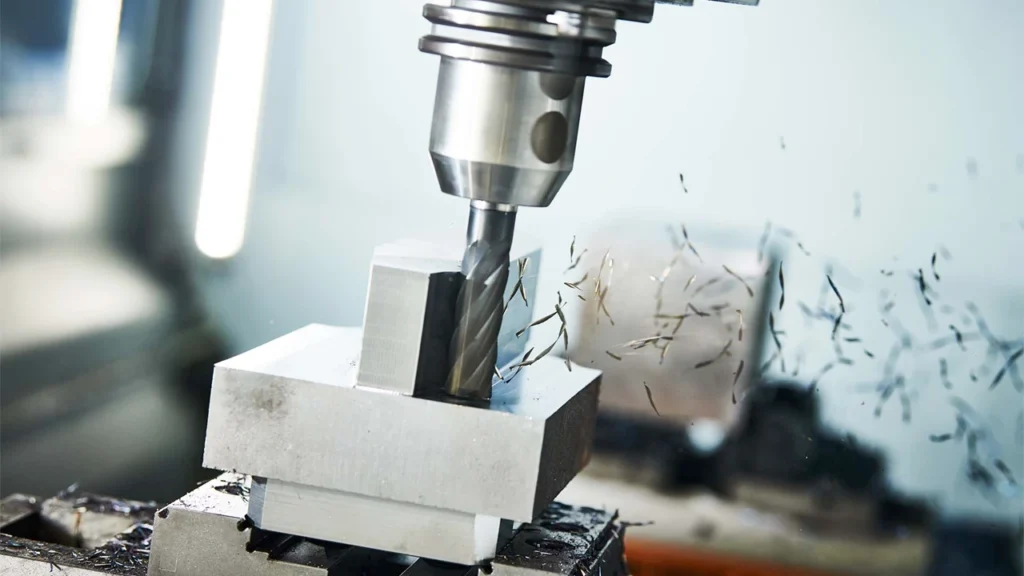
Machining in the Digital and Precision Era
Today, machining operates at the intersection of hardware, software, and advanced automation. Modern systems are often fully integrated with computer-aided design (CAD) and computer-aided manufacturing (CAM) platforms, allowing for seamless digital workflows from concept to component.
Technologies like 5-axis machining, wire EDM, and nano machining have pushed the boundaries of what’s possible in terms of size, speed, and complexity. These systems are essential for fabricating intricate parts in aerospace, electronics, and medical applications—industries where a single deviation in tolerance can lead to catastrophic failure.
Additionally, environmental concerns have spurred the development of green machining practices, focusing on waste reduction, coolant recycling, and energy-efficient motors. Meanwhile, the rise of smart manufacturing and IoT-connected systems is transforming how factories monitor performance and predict maintenance, shifting the industry toward predictive and data-driven operation models.
The evolution of machining—from ancient tools to precision CNC machining—reflects not just a change in tools, but a transformation in how humanity approaches the act of making. It’s a story of increasing complexity matched by increasing control, setting the stage for the next era of intelligent machining and beyond.
The Core Machining Processes
Machining is not a single method, but a family of processes, each serving a different role in shaping materials into functional parts. Understanding the capabilities, applications, and limitations of each machining process is essential for selecting the right method in industrial production. This section covers the most critical machining operations used across industries today.
Turning
Turning is a fundamental machining operation that uses a rotating workpiece and a stationary cutting tool to remove material. It is ideal for producing cylindrical components such as shafts, bushings, and threaded parts. This process can include facing, parting, grooving, and taper cutting. CNC lathe machining allows for high-speed, high-precision part production, and with the integration of automated systems, it supports both prototyping and mass production.
Swiss machining, a type of precision turning, is widely used in the medical and electronics industries. It supports the production of small, highly detailed components with tight tolerances. The ability to machine long, slender parts with minimal deflection makes turning one of the most versatile and widely adopted machining processes.
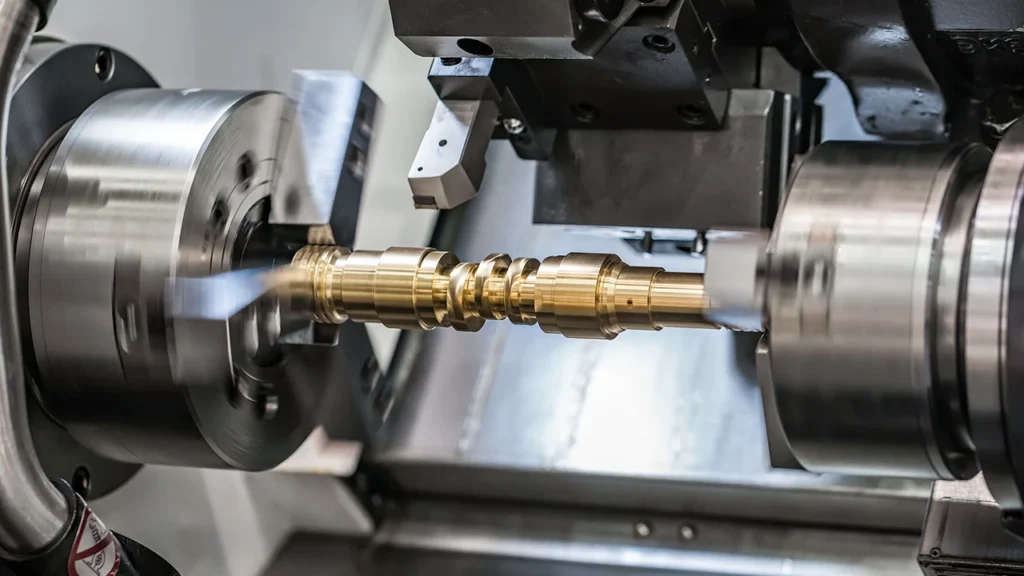
Milling
Milling involves a rotating cutting tool that moves across the surface of a stationary or moving workpiece to shape it. It is typically used for flat surfaces, slots, pockets, and complex 3D contours. Milling is common in industries such as aerospace, automotive, and toolmaking. CNC milling machining systems now include up to five axes of movement, allowing for intricate part geometries and improved precision.
Modern milling supports a wide range of materials, including metals, plastics, and composites. Specialized tools like end mills, face mills, and ball-nose cutters are selected based on the geometry and material of the workpiece. High-speed CNC milling is often integrated with CAM software to optimize cutting paths and tool usage, resulting in reduced cycle times and better surface quality.
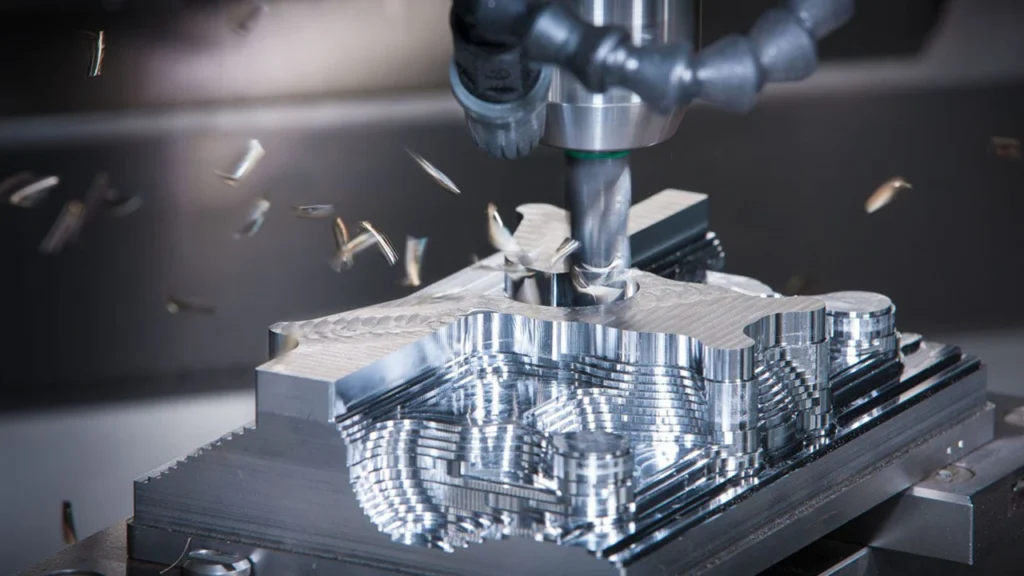
Drilling
Drilling is the process of creating circular holes in a material using a rotating drill bit. It is one of the most commonly used machining operations in both manual and CNC applications. Drilling is essential for preparing parts for fasteners, cooling passages, or alignment features.
Advanced drilling operations include deep hole drilling, counterboring, reaming, and tapping. CNC drilling machines can execute multiple hole types at high speeds with great accuracy. In high-volume production, automated drilling centers improve repeatability and efficiency. Selecting the right drill geometry and coolant delivery is essential to minimizing tool wear and improving hole quality.
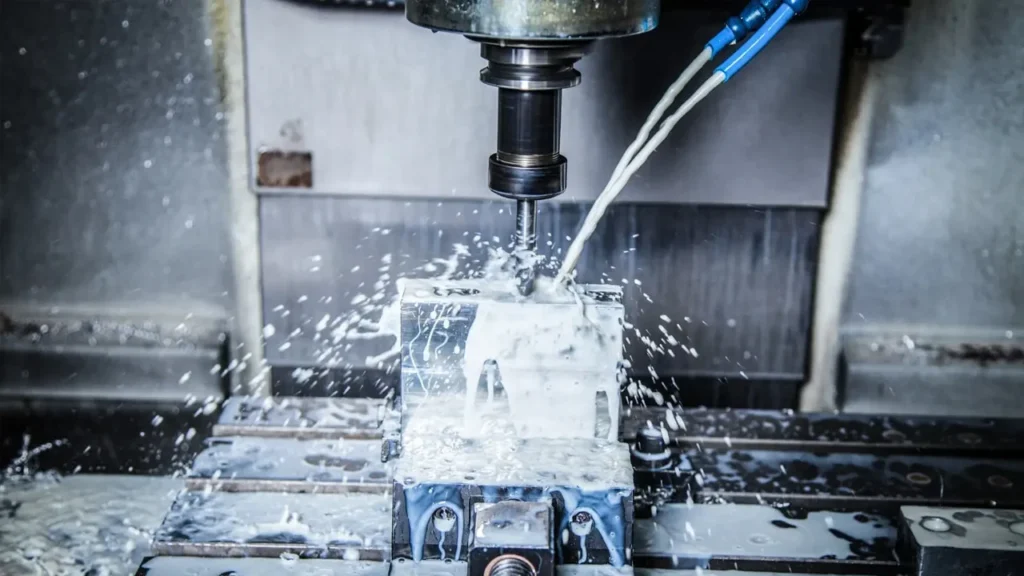
Grinding
Grinding is a finishing process that uses an abrasive wheel to remove small amounts of material. It is typically used for hard materials and applications where tight tolerances and high surface quality are critical. Common grinding processes include surface grinding, cylindrical grinding, and centerless grinding.
Grinding machining is often used after milling or turning to achieve final dimensions and surface smoothness. It is essential in tool and die manufacturing, bearing surfaces, and precision molds. Modern grinding machines are equipped with in-process gauging systems to maintain dimensional consistency and minimize defects.
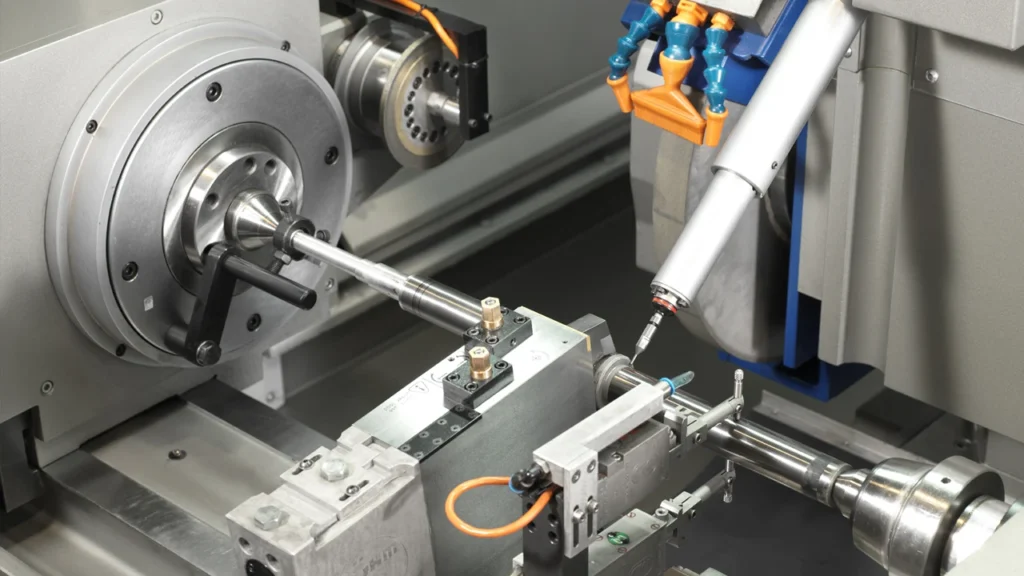
Boring
Boring is used to enlarge or refine existing holes to achieve high precision and alignment. It is especially useful in applications requiring accurate diameters, such as engine cylinders, hydraulic systems, and precision housings. CNC boring machines offer programmable control over spindle speed, feed rate, and cutting path to achieve optimal results.
Boring machining improves the roundness, concentricity, and surface finish of holes. Internal grooving and facing can also be performed during boring. Single-point boring tools, boring bars, and modular boring heads are selected based on hole depth, diameter, and material type.
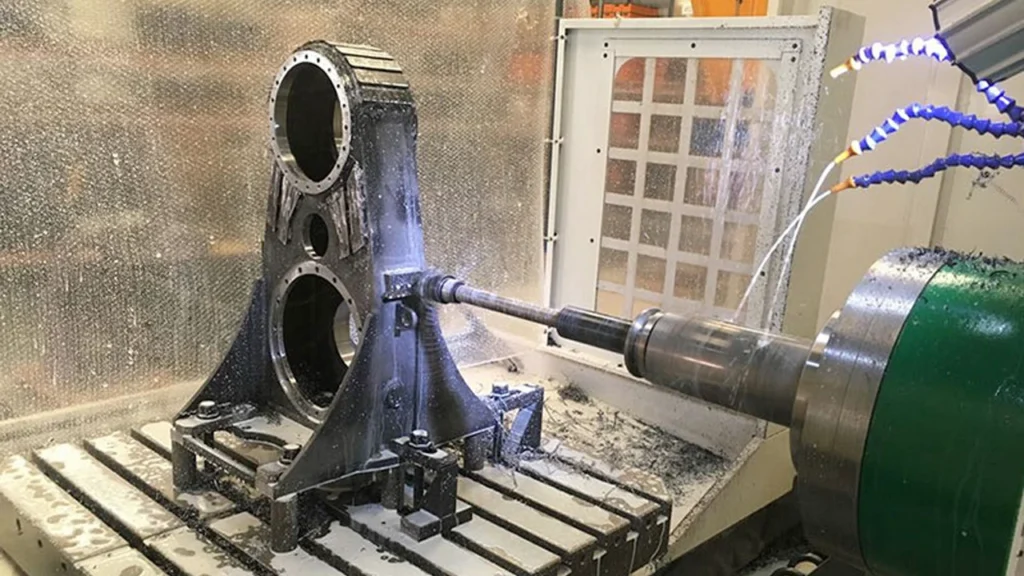
Broaching
Broaching is a machining method that uses a toothed tool to remove material in a linear motion. It is highly effective for creating internal shapes such as keyways, splines, and square holes in one pass. Broach machining is used in high-volume production where speed and part consistency are crucial.
Vertical and horizontal broaching machines are employed based on part orientation and size. Common industries include automotive, aerospace, and heavy machinery. Although broaching tools are expensive, the ability to finish complex shapes quickly and accurately makes it a cost-effective solution for repetitive tasks.
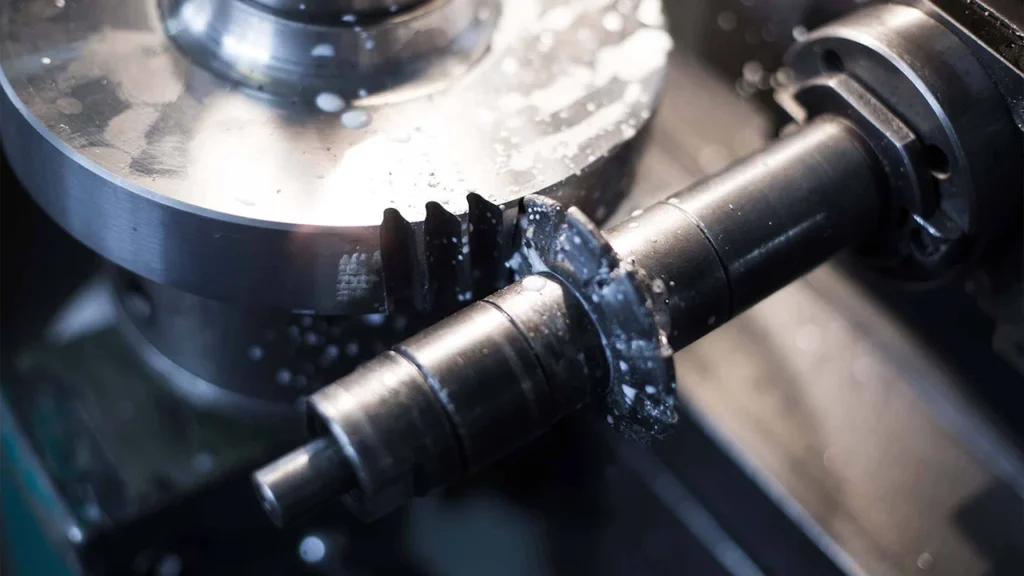
Sawing
Sawing is used to cut raw material into manageable lengths or to separate finished parts from stock. It is typically a preparatory or post-processing step, performed before or after other machining operations. Sawing machining includes band sawing, circular sawing, and hacksawing.
CNC sawing machines allow precise control over cut length and angle. Material selection, blade type, and feed rate determine cutting efficiency and surface finish. Sawing is commonly used in fabrication shops, forging plants, and machining centers to optimize raw material usage and workflow.
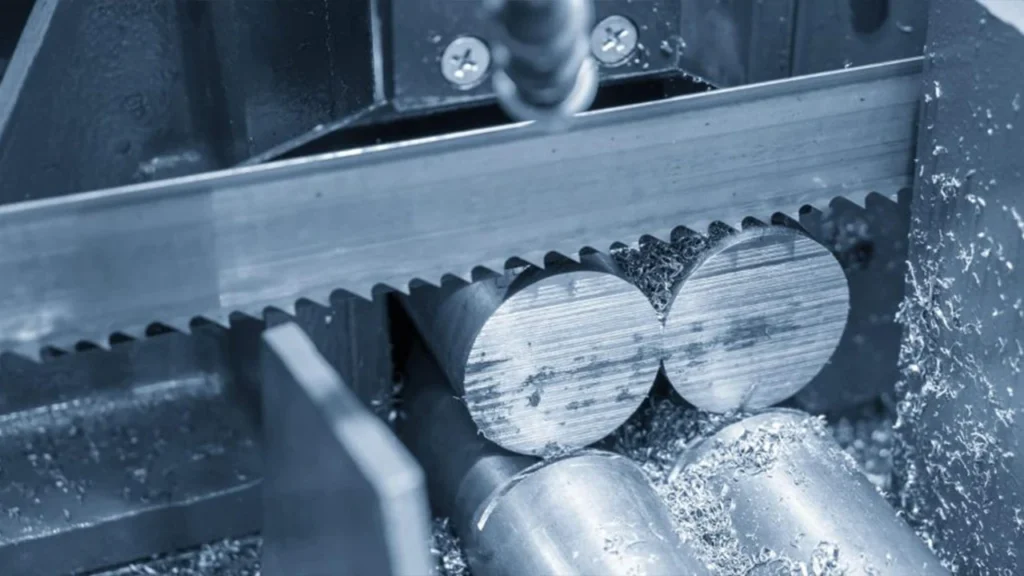
EDM (Electrical Discharge Machining)
EDM is a non-traditional machining process that uses electrical discharges (sparks) to remove material. It is especially effective for hard metals and complex geometries that are difficult to machine with conventional tools. Wire EDM and sinker EDM are the two primary types.
Wire EDM machining uses a thin wire as an electrode to cut intricate shapes, often used in die-making, injection molds, and aerospace components. EDM machining is ideal for producing sharp internal corners, delicate cavities, and heat-treated parts without inducing mechanical stress.
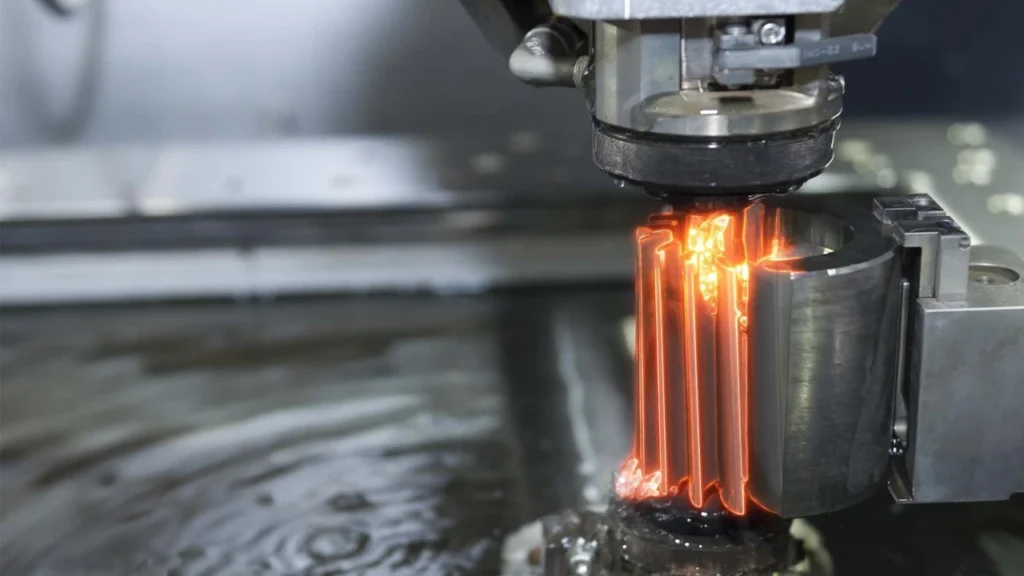
Ultrasonic Machining
Ultrasonic machining employs high-frequency vibrations delivered through a tool that removes material by micro-chipping. It is best suited for brittle materials like glass, ceramics, and hard carbides. This technique does not generate heat, making it ideal for applications where thermal damage is a concern.
The tool never contacts the workpiece directly; instead, abrasives suspended in a liquid medium do the cutting. Applications include micro-machining, semiconductor substrates, and intricate engraving. Although relatively slow, ultrasonic machining enables precise control in highly specialized industries.
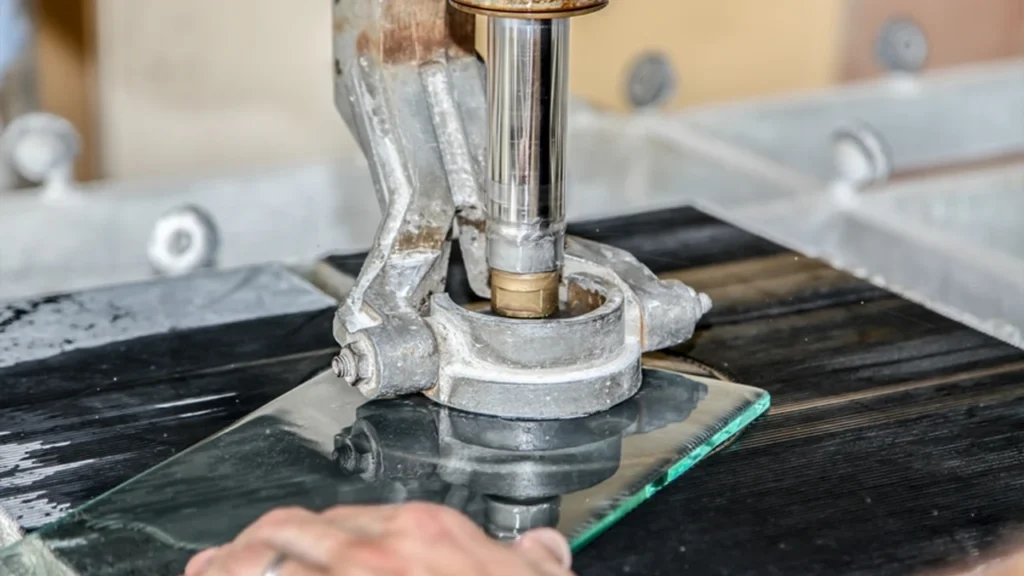
Cryogenic Machining
Cryogenic machining involves the use of liquid nitrogen or carbon dioxide as a coolant during cutting operations. It reduces tool wear, controls thermal deformation, and improves surface quality—especially in difficult-to-machine materials like titanium alloys or hardened steels.
This method is increasingly used in aerospace, biomedical, and energy sectors where sustainability and performance are critical. Cryogenic environments suppress chemical reactions at the cutting interface, allowing higher speeds and extended tool life without sacrificing dimensional accuracy.
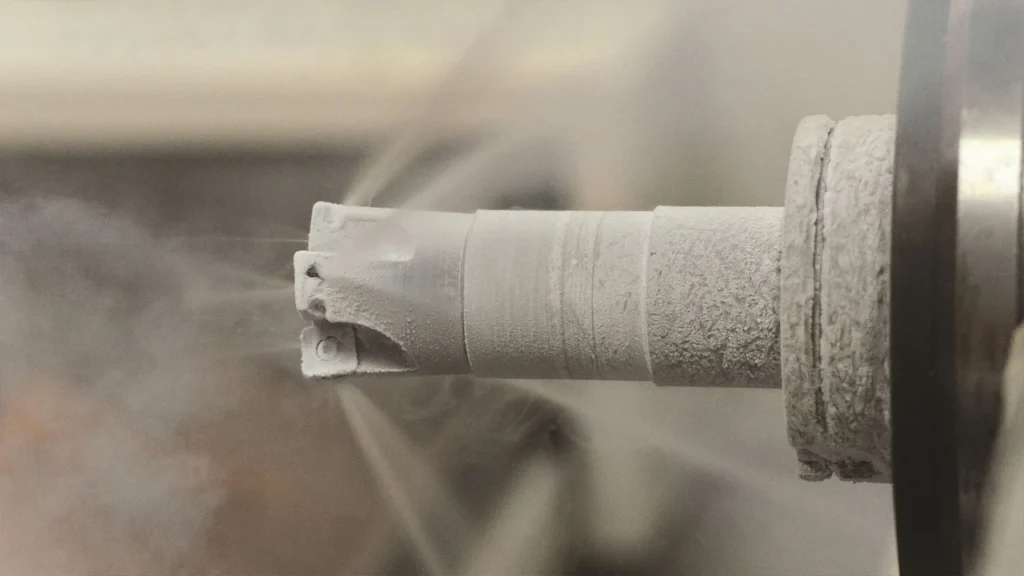
Swiss Machining
Swiss machining is a specialized form of turning where the workpiece is supported close to the cutting tool, reducing deflection. Originally developed for watchmaking, it now serves medical, electronics, and aerospace industries with small, high-precision parts.
Swiss-type lathes often feature multiple axes, live tooling, and secondary operations in a single setup. This reduces handling, shortens cycle time, and improves part uniformity. Swiss machining is ideal for parts with tight tolerances, long slender geometries, or intricate features.
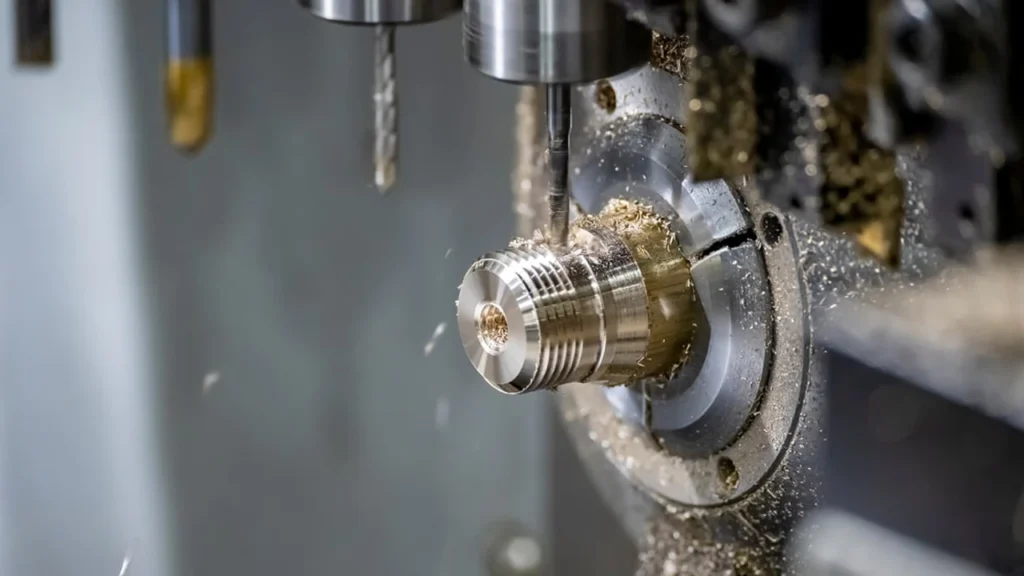
5-Axis Machining
5-axis machining enables the simultaneous movement of a cutting tool along X, Y, Z linear axes and A, B rotational axes. This capability allows complex geometries to be machined in a single setup, reducing fixture changes and improving accuracy.
Industries like aerospace and automotive rely on 5-axis machining to manufacture turbine blades, impellers, and sculpted surfaces. The integration of CAM software, real-time simulation, and adaptive control systems makes this technique one of the most advanced and efficient in modern manufacturing.
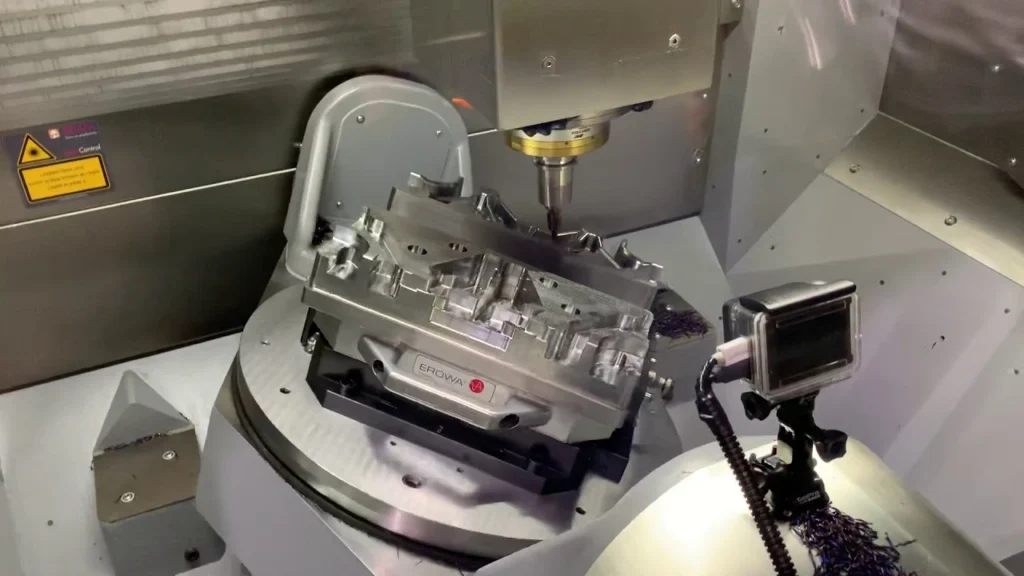
Other Machining Processes
While traditional methods like turning, milling, and grinding dominate most machining tasks, several advanced or specialized processes also play critical roles in modern manufacturing. These methods offer solutions for materials or geometries that conventional tools cannot handle efficiently, and they represent the cutting edge of machining innovation.
Electrochemical Machining (ECM)
Electrochemical Machining (ECM) is a non-contact process that removes metal through anodic dissolution, driven by electrical current in an electrolyte solution. It is ideal for machining extremely hard materials such as superalloys, titanium, and hardened steels. ECM produces burr-free, stress-free surfaces and is widely used in turbine blade shaping and medical device manufacturing where high precision and zero thermal distortion are critical.
Laser Beam Machining (LBM)
Laser Beam Machining (LBM) employs a focused laser beam to melt and vaporize material with pinpoint accuracy. It is most suitable for intricate micro-cutting, surface texturing, and fine drilling of metals, ceramics, and polymers. As a contactless method, LBM is advantageous in machining delicate or heat-sensitive materials with minimal mechanical stress.
Plasma Arc Machining (PAM)
Plasma Arc Machining (PAM) uses a high-velocity jet of ionized gas (plasma) to melt and eject material from the workpiece. This method is commonly used for cutting thick metal sheets, structural steel, and stainless steel in construction and shipbuilding industries. PAM offers faster cutting speeds and lower tooling costs compared to mechanical cutting methods.
Electron Beam Machining (EBM)
Electron Beam Machining (EBM) leverages high-energy electron beams within a vacuum chamber to remove material through localized melting and vaporization. With its ultra-fine focus and ability to generate extremely high energy densities, EBM is ideal for micro-machining aerospace components, electronics, and medical implants where tolerances are measured in microns.
Hybrid Machining
Hybrid Machining integrates two or more machining technologies—such as combining laser heating with mechanical cutting, or adding ultrasonic assistance to milling—to enhance performance. These hybrid systems are designed to improve material removal rates, surface integrity, and tool life. They are especially useful for composite materials or complex geometries where conventional machining alone is insufficient.
Each of these processes expands the possibilities of what machining can accomplish, especially in high-performance and precision-demanding sectors. As material science and digital control technologies advance, these alternative machining methods are expected to become even more essential in future manufacturing environments.
Essential Machining Tools and Equipment
Machining wouldn’t exist without the right equipment. From shaping to finishing, every process depends on a specific type of machine. This section introduces the most common tools used in machining—following the same order as the previous process section—to help beginners quickly understand what each machine does and why it matters.
Lathes
Lathes are used for turning. They rotate a workpiece while a stationary tool shapes the surface—ideal for creating round parts like shafts, rods, and threads. Today’s CNC lathe machining systems offer fast, programmable control, often with multi-tool setups for high-volume production.
Special types include pipe thread lathes for long tubing and Swiss-type lathes for tiny, precise parts used in medical and electronic products.
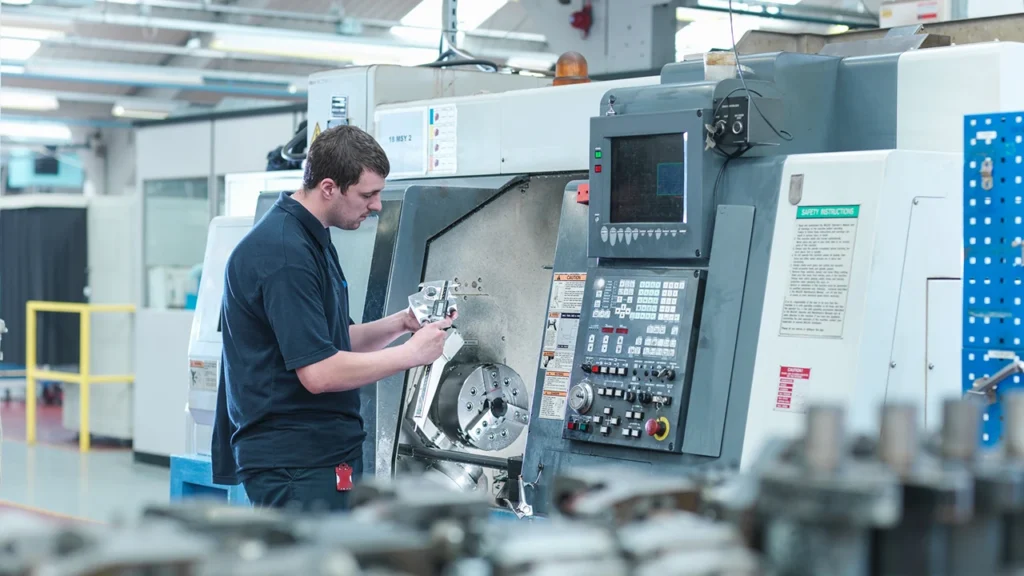
Milling Machines
Milling machines use a rotating tool to remove material from a stationary workpiece. They’re ideal for flat surfaces, slots, and 3D shapes. CNC milling machining systems allow automated, repeatable operations. More advanced 5-axis machines handle complex parts in one setup—useful in aerospace and mold production.
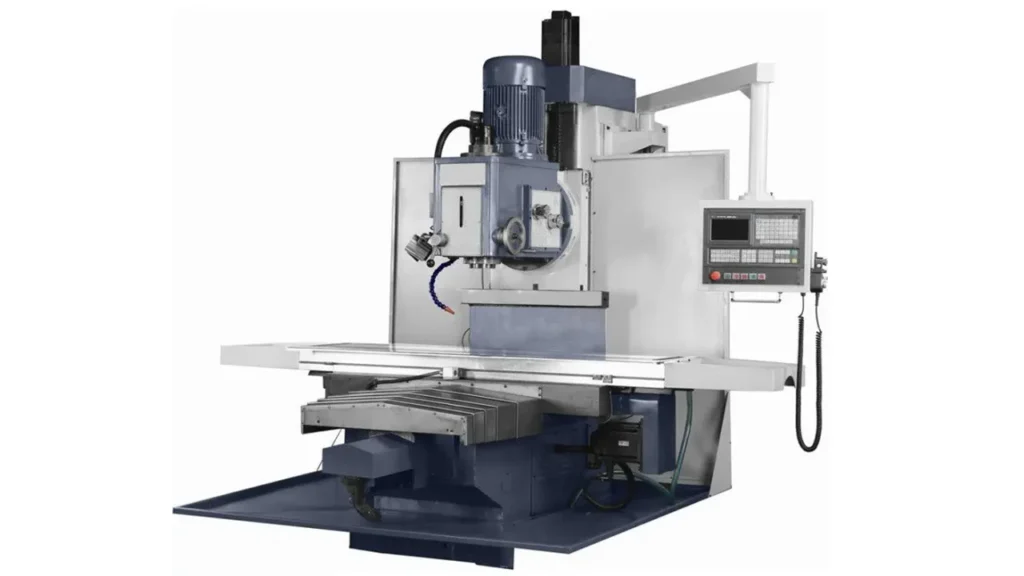
Drilling Machines
Drilling machines create round holes using a spinning bit. They come in bench, floor, and CNC versions. In manufacturing, multi-spindle drilling machines boost productivity by drilling several holes at once. These machines are often part of central machining systems for streamlined production.
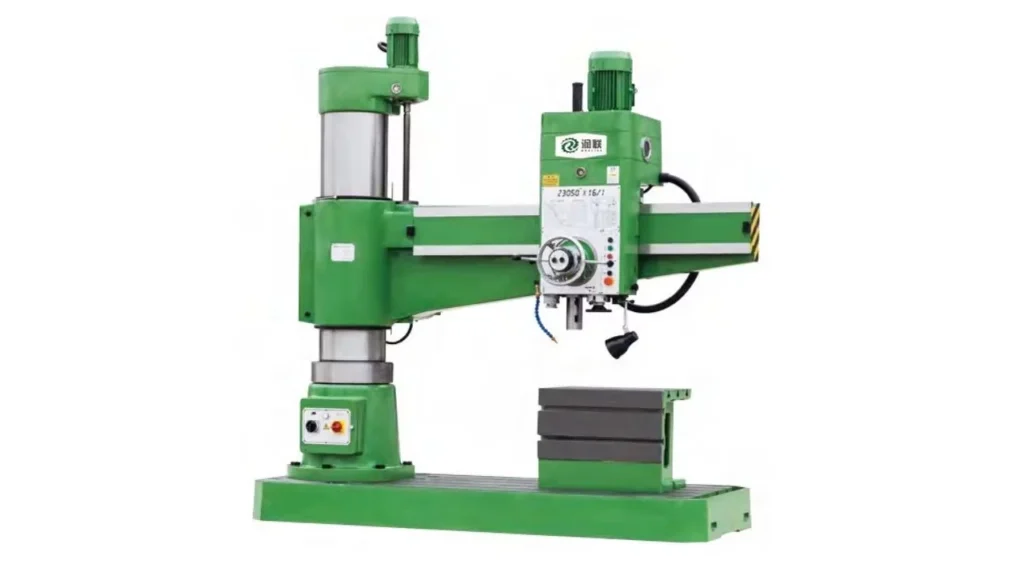
Grinding Machines
Grinding machines use abrasive wheels to smooth or finish a surface with high precision. They’re essential when tight tolerances and fine finishes are required—common in toolmaking, bearing production, and hardened parts. CNC grinders can automate the process, improving consistency and quality.
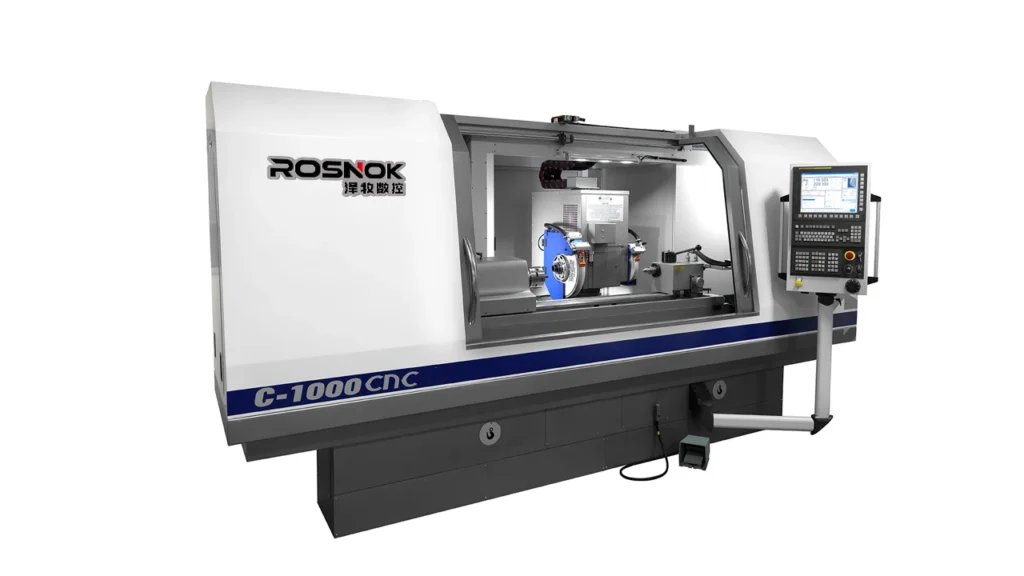
Boring Machines
Boring machines enlarge and refine existing holes, ensuring perfect alignment and diameter. Horizontal boring mills are used for large parts like engines or pumps. These machines are known for their accuracy, especially on deep or long holes.
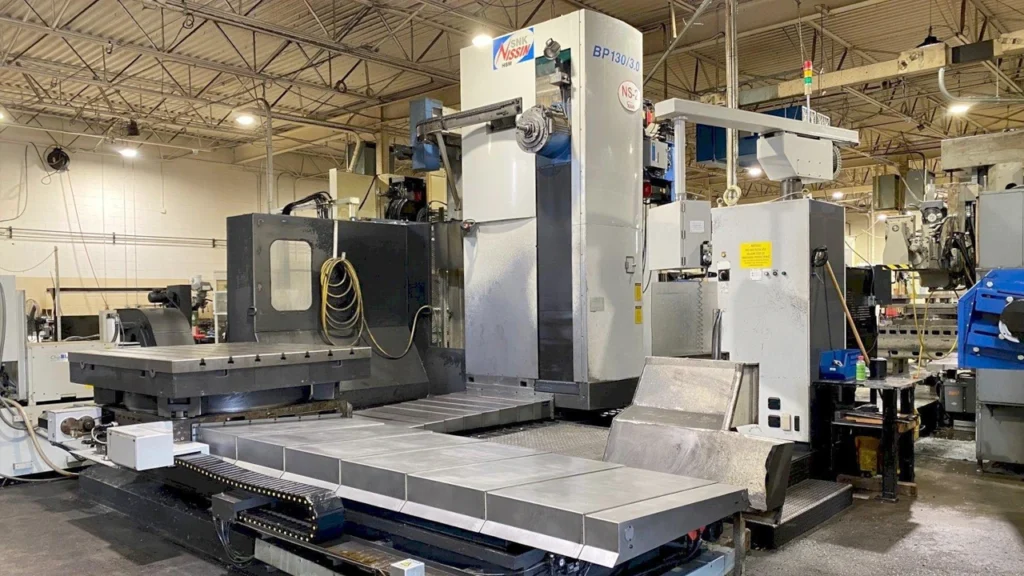
Broaching Machines
Broaching machines cut complex internal shapes—like keyways, splines, or hex holes—using a long, toothed tool. These machines are fast and precise but often used in mass production due to their specialized tools and setup.
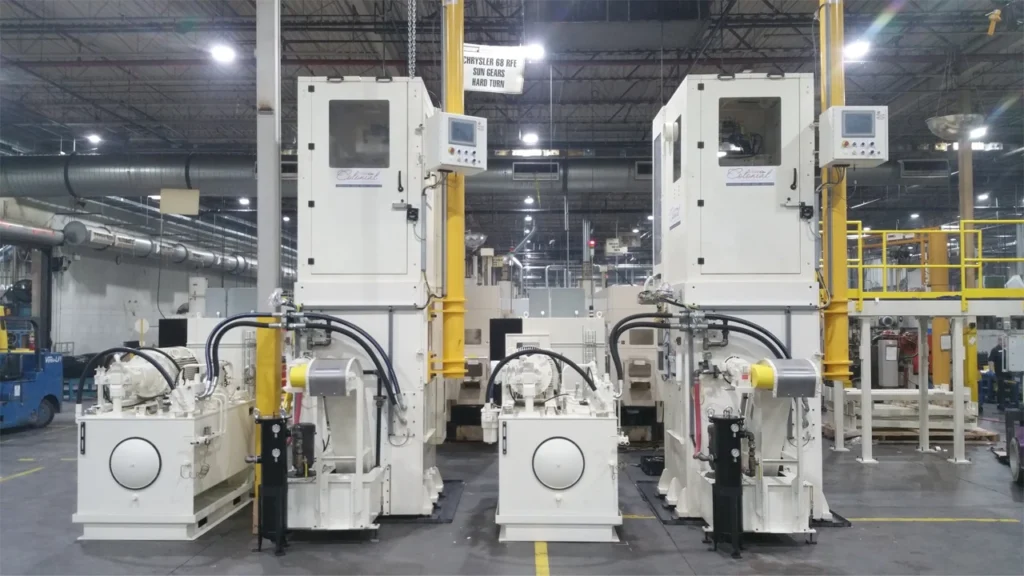
Sawing Machines
Sawing machines cut material into lengths or separate finished parts from stock. Common types include band saws and circular saws. CNC sawing machines allow precise, automated cuts and are typically the first step in metal machining workflows.
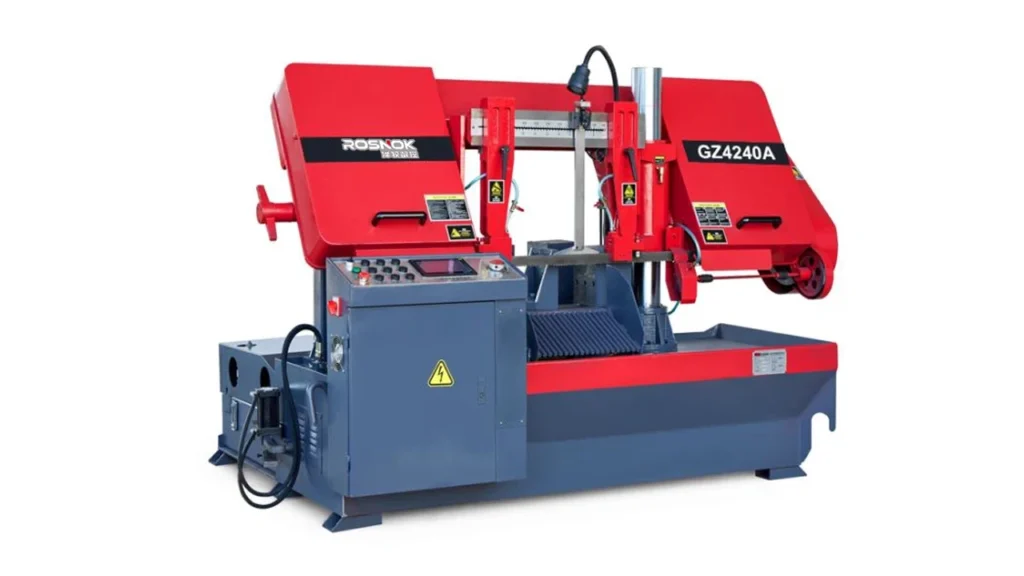
EDM Machines
Electrical Discharge Machining (EDM) machines remove material using electrical sparks. Wire EDM cuts intricate shapes; sinker EDM makes cavities in hardened materials. These are essential for moldmaking, aerospace parts, and heat-sensitive components.
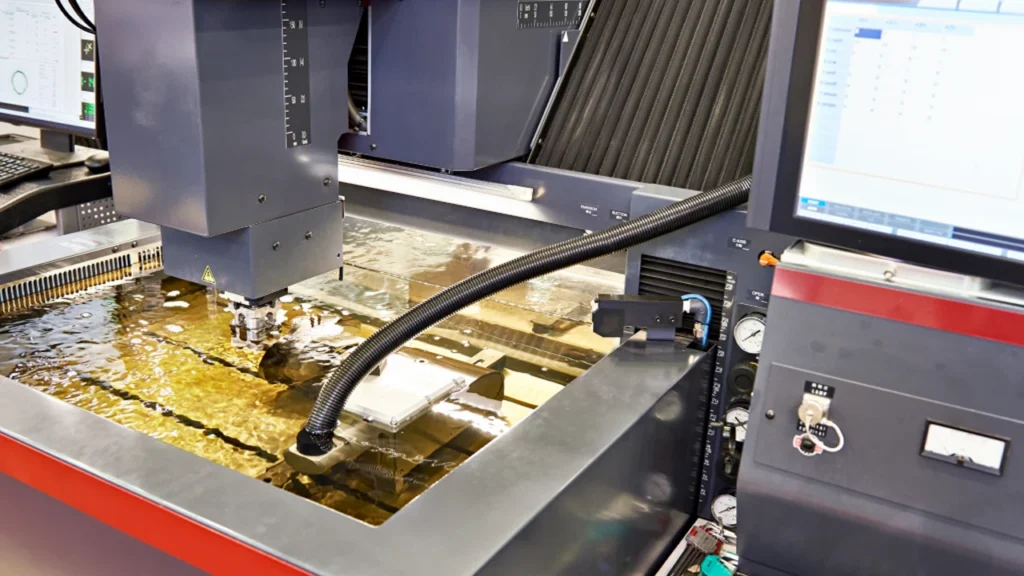
Ultrasonic Machining Systems
These machines vibrate a tool at high frequency while abrasives cut the material—ideal for brittle materials like ceramics or glass. They’re used in electronics, optics, and micro-manufacturing where precision is critical and heat must be avoided.
Cryogenic Machining Systems
Cryogenic systems cool the tool and part with liquid nitrogen. They reduce wear and improve surface quality, especially when cutting tough materials like titanium or Inconel. This is common in aerospace and medical machining, where precision and tool life are vital.
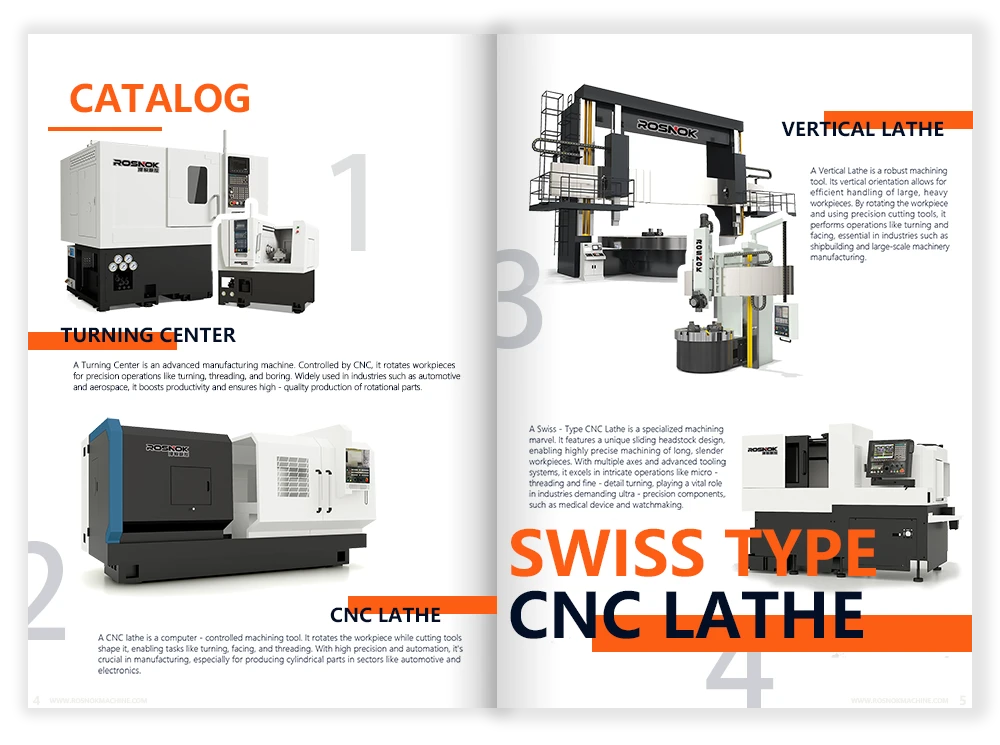
Swiss-Type Lathes
Swiss lathes are specialized machines for turning very small, detailed parts. The workpiece moves through a guide bushing while the tool stays close, reducing vibration. This makes them perfect for medical instruments, miniature connectors, and watch components.
5-Axis Machining Centers
5-axis machining centers can move a tool or workpiece in five directions, allowing all surfaces to be machined without repositioning. These systems are key in producing complex, high-precision components in industries like aerospace, defense, and automotive.
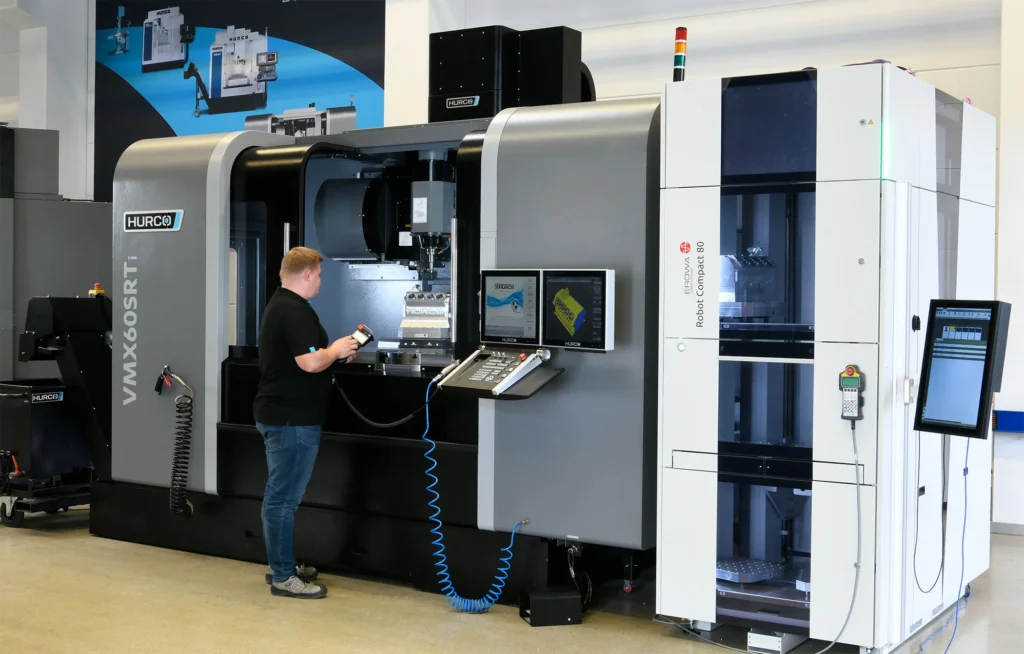
Other Common Machines
Shops also use general-purpose machining centers, tapping machines, and multi-operation cells to perform flexible tasks. These systems are often integrated with robotics, inspection stations, and digital monitoring for high-efficiency production.
Together, these machines form the backbone of the machining industry—each tailored to specific tasks but united by their role in shaping materials with precision.
Choosing the right equipment depends on the material, part geometry, and production needs.
With a solid understanding of machining tools, we can now turn to the materials they’re built to process.
Materials Commonly Used in Machining
Every machining process is shaped by the material being cut. The choice of material affects everything—from tool selection and cutting speed to cooling method and machine type. In this section, we explore the most common materials used in machining, their characteristics, and how they influence manufacturing strategies.
Metals
Metals remain the most widely machined materials in manufacturing. Each metal type has unique machining behaviors, tool wear characteristics, and finish requirements.
Steel is the most commonly used industrial metal due to its strength and versatility. Machining low-carbon steels is generally easier and less taxing on tools, while high-carbon and alloy steels require more robust setups and specialized tooling. Hardened steels are often finished using grinding or electrical discharge machining to maintain dimensional accuracy.
Aluminum is lightweight and highly machinable. Its soft structure allows for high-speed cutting, making it ideal for industries like aerospace, automotive, and consumer electronics. However, it can produce long chips and tends to adhere to cutting tools, requiring high rake angles and effective chip evacuation.
Titanium is much more difficult to machine. It’s strong, heat-resistant, and reactive at high temperatures, which can cause tool wear and thermal deformation. Cryogenic machining and coated carbide tools are often used to manage its challenges. It’s frequently selected for aerospace and medical parts that demand strength without excess weight.
Brass and copper alloys are known for their excellent machinability. They generate minimal tool wear, offer good surface finishes, and are often used in precision parts like fittings, valves, and electrical connectors.
Stainless steel, though corrosion-resistant and strong, can be hard on cutting tools due to its work-hardening tendencies. Slower speeds, sharper tools, and efficient coolant application are essential to maintain tool life and surface quality.
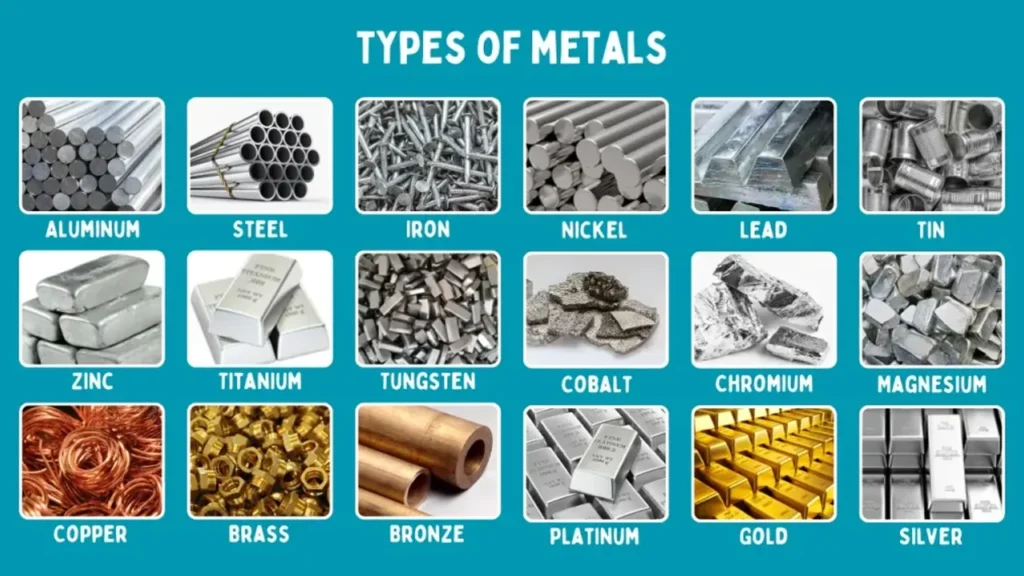
Plastics and Composites
While metals dominate traditional machining, plastics and composites are increasingly common in specialized industries.
Engineering plastics such as POM, PTFE, nylon, and polycarbonate are frequently machined for applications in electronics, medical devices, and chemical processing. These materials are lighter, corrosion-resistant, and non-conductive. However, their thermal sensitivity can lead to deformation if heat is not properly managed.
Machining nylon, for example, requires lower spindle speeds and high-clearance tools to prevent material melting or distortion. Coolant usage and chip control are especially important in maintaining part accuracy.
Composites, like carbon fiber-reinforced polymers (CFRPs), are used in aerospace and sports equipment. These materials are abrasive and delaminate easily, requiring specialized diamond or ceramic tooling. Because composites don’t behave like homogeneous materials, machining them demands careful planning of cutting direction, depth, and support.
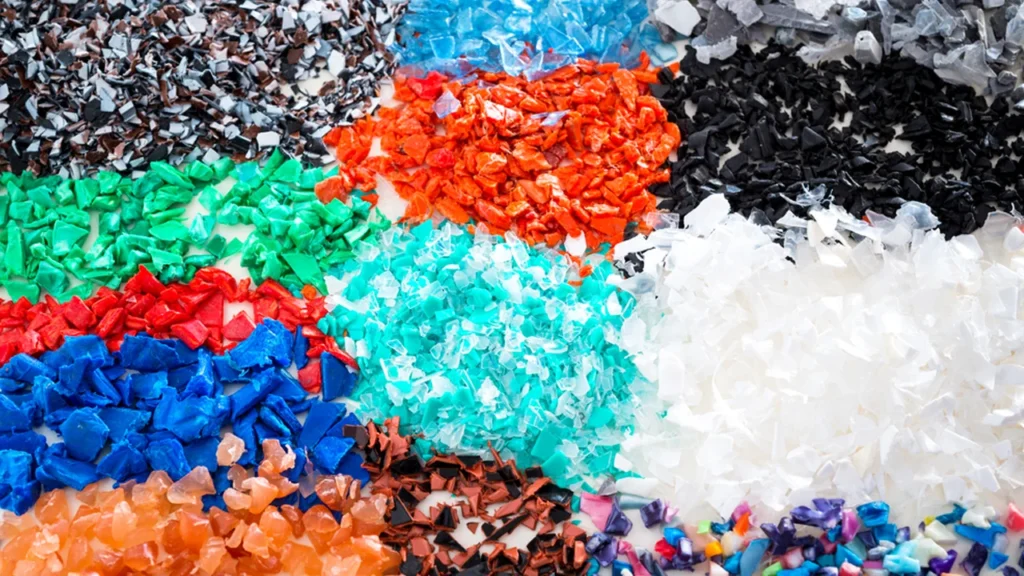
Ceramics and Glass
Some machining applications involve extremely hard and brittle materials such as ceramics and glass. These are found in electronics, optics, and precision medical components.
Traditional tools are ineffective on these materials, which are prone to cracking and chipping. Instead, manufacturers use non-conventional methods like ultrasonic machining, laser cutting, and electrical discharge machining. These methods apply minimal mechanical force, helping preserve the integrity of delicate materials.
Ceramic machining is especially relevant in dental restoration, implant production, and advanced electronics. Tool paths must be optimized to reduce stress concentration, and tool materials must be harder than the workpiece.

Special Alloys
High-performance alloys like Inconel, Hastelloy, and Monel are essential in aerospace, marine, and chemical processing. These materials resist heat, corrosion, and pressure—but they are also difficult to machine.
These alloys require rigid machines, sharp tools, low feed rates, and advanced cooling strategies. Machining superalloys is often where modern systems like 5-axis machining, cryogenic setups, and real-time process monitoring truly prove their value.
Machining titanium and similar alloys has become a focus in aerospace where lightweight yet durable parts are required. Here, even the tool path strategy can influence tool life and product quality.

Considerations When Choosing Materials
Material selection in machining isn’t just about the part’s final use. It’s also about manufacturability, cost, machine compatibility, and sustainability. For example, while aluminum is fast and inexpensive to cut, a part needing extreme heat resistance may justify the added cost and difficulty of titanium.
Additionally, newer trends like green machining and energy-efficient practices have influenced how materials are selected and processed. Materials that generate less waste, consume less energy, or allow for faster cycle times are gaining favor, especially in high-volume or precision-critical industries.
Applications of Machining in Industry
Machining is not limited to factories full of metal parts. It plays a vital role across a wide range of industries—anywhere precision, durability, or customization is needed. From complex aerospace components to everyday consumer goods, machining ensures the accuracy and functionality of countless critical products. This section explores how machining is applied in different sectors and what makes it indispensable to modern industrial production.
Aerospace
In aerospace, machining is essential for producing lightweight, high-strength components that must perform reliably under extreme conditions. Parts such as turbine blades, engine mounts, and structural brackets require tight tolerances and must endure high stress, temperature, and vibration.
5-axis machining and advanced computer-aided machining are commonly used to manufacture these complex geometries. Materials like titanium and Inconel, which are difficult to shape through casting or forming, are often machined due to their strength-to-weight ratio. Wire EDM and cryogenic machining are also used to maintain surface integrity and dimensional stability during production.
Because aerospace standards demand precision at the micron level, machining is often the only viable method to achieve the necessary surface finish, geometry, and repeatability.
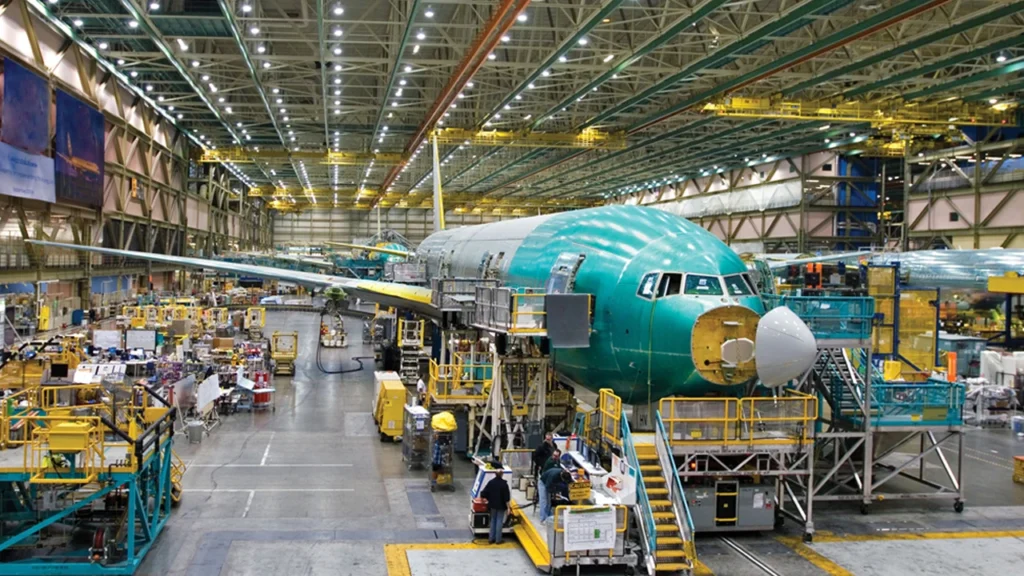
Automotive
Machining plays a central role in the automotive sector by enabling mass production of engine components, transmission systems, brake parts, and suspension elements. These parts require exact alignment, wear resistance, and durability.
CNC machining allows car manufacturers to quickly and accurately produce high volumes of identical parts, from cylinder heads to crankshafts. The use of broaching, drilling, and turning ensures efficient removal of material while maintaining dimensional control. Machining also supports rapid prototyping in automotive R&D, helping engineers iterate designs before full-scale production.
In electric vehicle production, new materials and component layouts are emerging, which machining technologies have adapted to accommodate. Lightweight aluminum housings and complex cooling channels are now routinely machined for electric motors and battery systems.
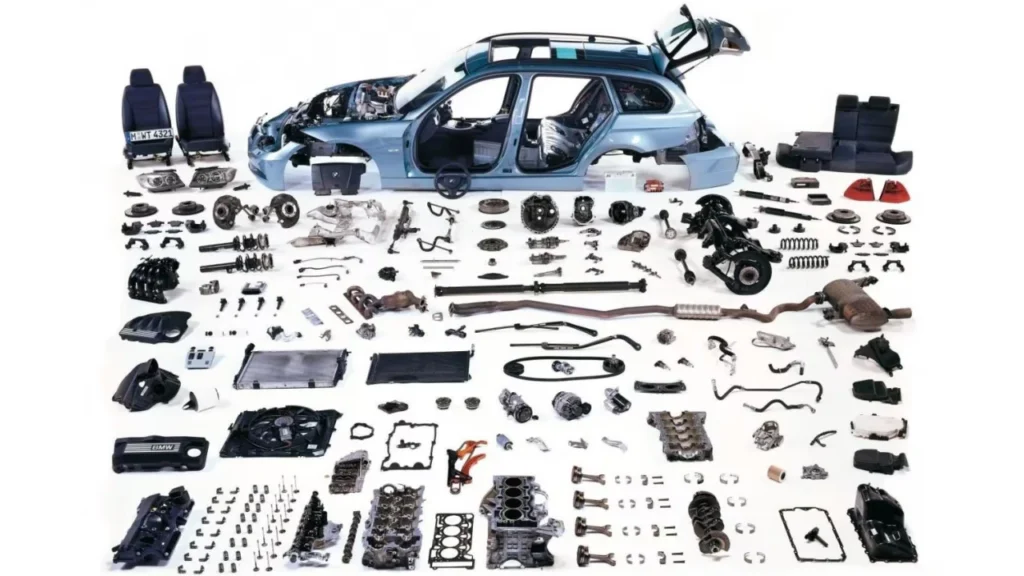
Medical Devices
Precision machining is vital in the medical field, where products must meet strict standards for safety, sterility, and biocompatibility. From orthopedic implants to dental tools and surgical instruments, machining enables the creation of parts that fit the human body with high precision.
Swiss-type lathes, micro-milling, and electrical discharge machining are used to fabricate intricate features with tight tolerances. Materials like titanium, surgical-grade stainless steel, and high-performance polymers are commonly machined for their strength and biocompatibility.
In addition to final products, machining is also used to manufacture custom fixtures, molds, and test components used in medical device development and certification.
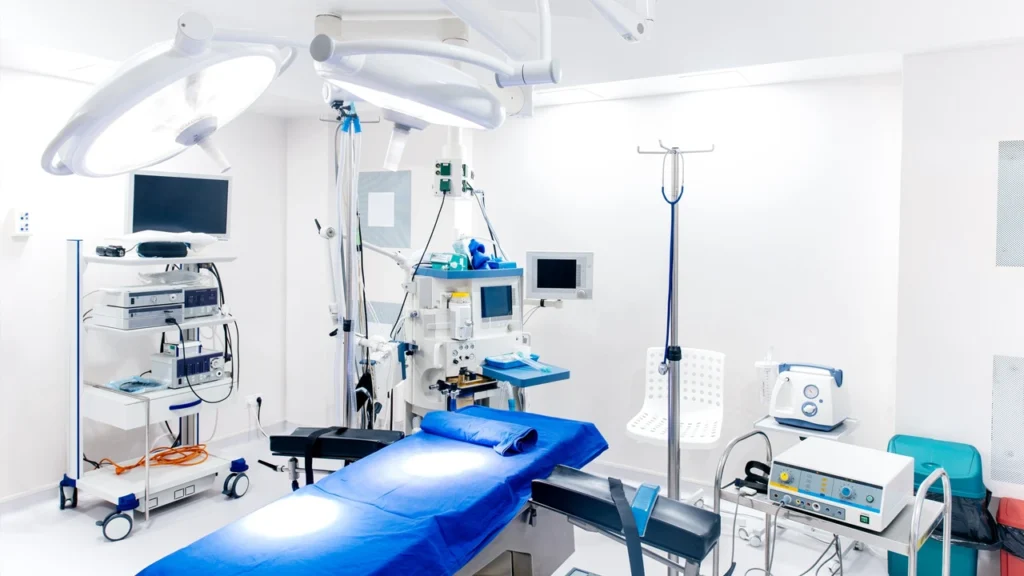
Electronics and Semiconductors
Electronics manufacturing benefits from machining in both prototyping and production. Housings, heat sinks, and connectors are often machined from aluminum or plastics due to their thermal and electrical properties.
Micromachining techniques are used for fine details and small-scale components, especially in high-frequency applications. Ultrasonic machining and EDM are employed to shape brittle materials like quartz and ceramics used in semiconductor equipment.
Machining also supports the production of testing jigs, molds for casings, and high-precision mechanical structures found in automation devices and cleanroom systems.
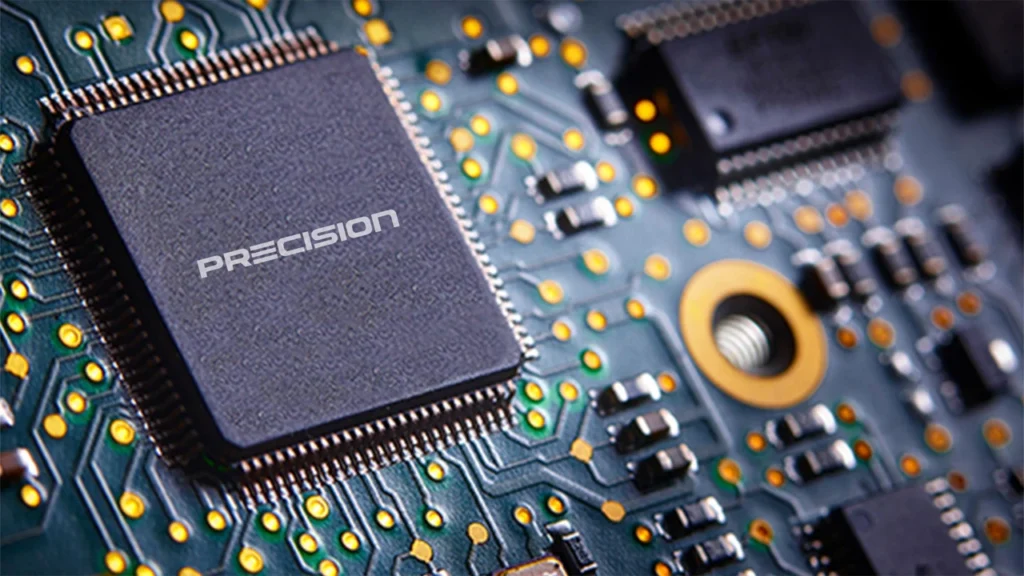
Oil, Gas, and Energy
The energy sector depends on machining to produce components that function in high-pressure, high-temperature, or corrosive environments. In oil and gas, pipe thread lathes and large vertical turning machines are used to shape drill collars, valves, and threaded casings.
In renewable energy systems like wind turbines and hydroelectric generators, large components such as shafts, gearboxes, and bearing housings are manufactured using heavy-duty machining centers.
Electrical discharge machining and advanced grinding processes are also applied to maintain sealing surfaces and part integrity in systems where leakage or misalignment could lead to catastrophic failure.

Tool and Die Making
Tool and die making is an industry built around machining. Dies, molds, and fixtures must be manufactured with extreme precision to ensure they consistently produce quality parts.
This sector often uses hardened tool steels, which are difficult to shape without high-performance grinding and EDM processes. Surface finish, cavity geometry, and edge radii are all controlled through precision machining to meet tight production tolerances.
Advancements in 5-axis machining and CAM software have dramatically improved the efficiency and flexibility of mold making, allowing for faster turnaround and reduced lead times.
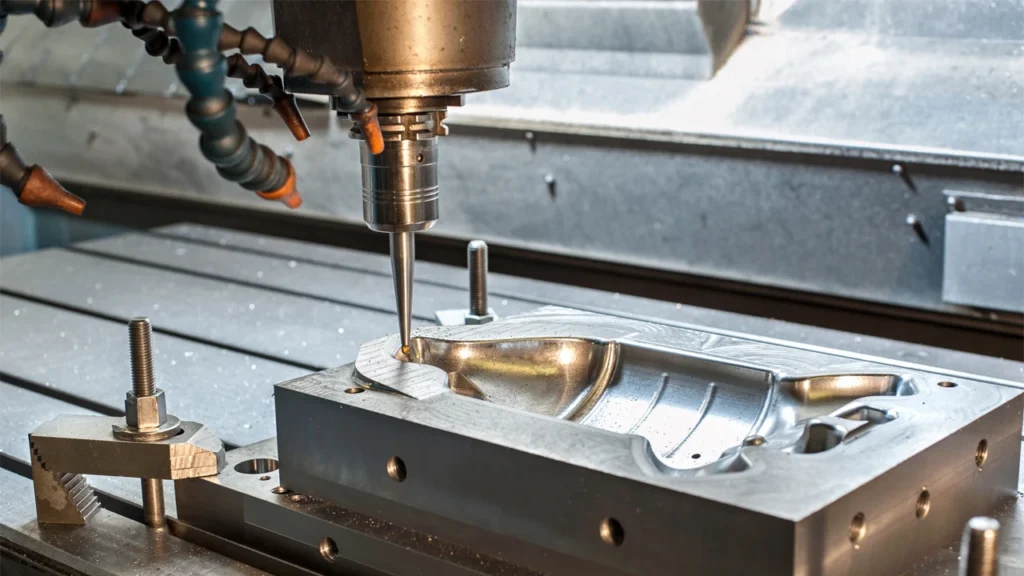
Defense and Firearms
Defense industries require reliable and durable parts, including weapons components, vehicle armor, and targeting systems. Machining allows for custom geometries, tight fitment, and the use of hard metals.
Firearm barrels, receivers, and triggers are commonly machined from stainless steel or aluminum. Aerospace-grade machining centers and CNC platforms are often used to ensure repeatability and compliance with regulatory specifications.
This sector also values traceability and quality assurance, where machining allows for precise process control and detailed documentation at every production step.
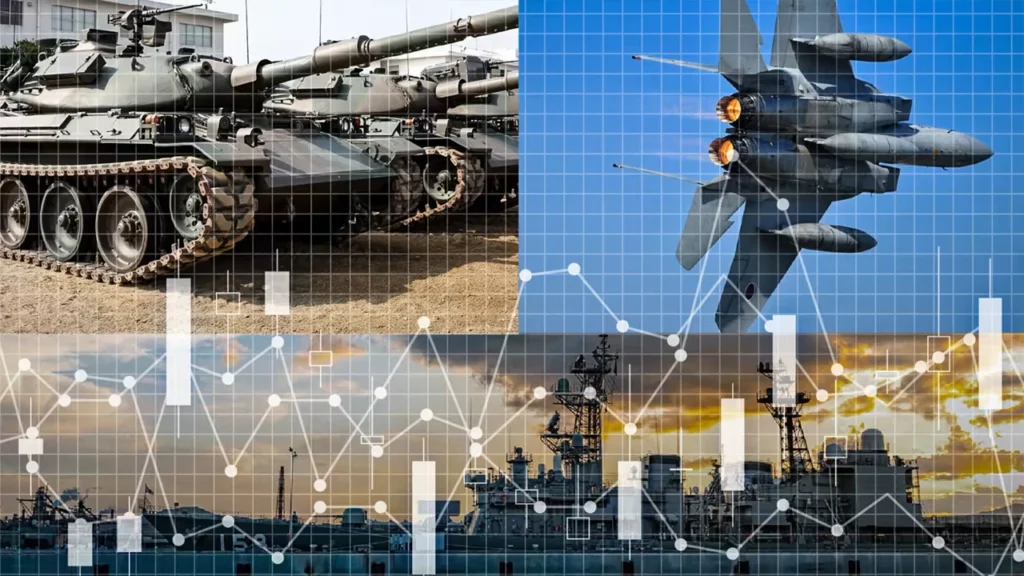
General Manufacturing and Consumer Products
Beyond high-stakes industries, machining is used daily in producing countless consumer and industrial goods. From bicycle parts and kitchen appliances to packaging molds and furniture fittings, machining allows manufacturers to scale production without sacrificing quality.
Machining supports custom CNC work, low- to mid-volume production, and short lead times. It enables businesses to quickly respond to market trends, prototype new designs, and maintain high product standards.
Even as additive manufacturing becomes more common, machining remains the preferred method for parts requiring high accuracy, smooth finishes, or specific mechanical properties.
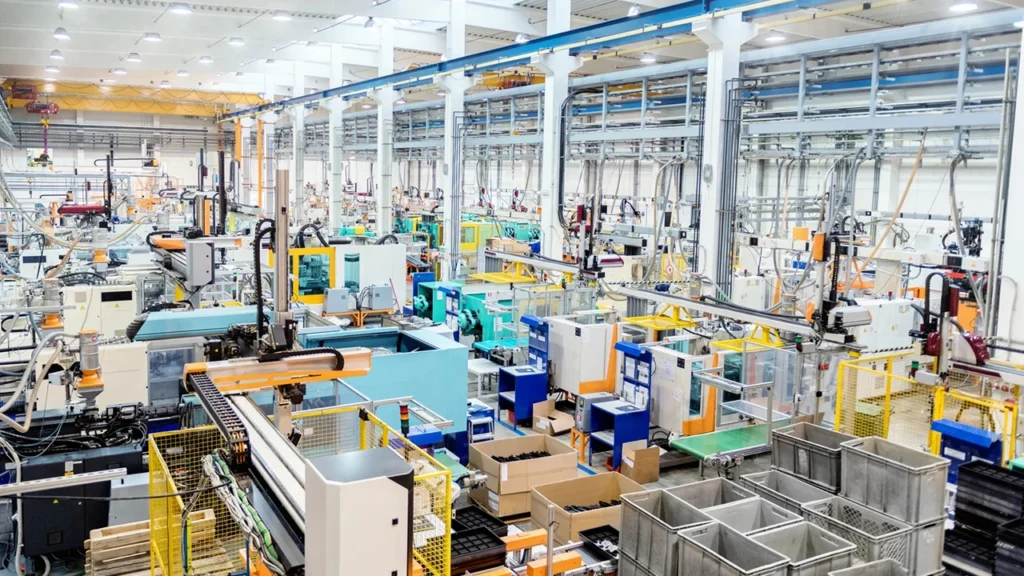
Advantages of Machining
Machining offers unique strengths that make it essential in modern manufacturing. It combines precision, flexibility, and consistency, serving industries where accuracy and adaptability are non-negotiable. This section outlines the core benefits of machining in a clear, beginner-friendly way.
High Precision and Tight Tolerances
Machining can achieve micron-level accuracy, making it the go-to method for parts that require exact dimensions and flawless alignment. It supports critical industries like aerospace, medical, and automotive, where even tiny errors are unacceptable.
Technologies like CNC machining and EDM make it possible to repeat this level of precision across multiple parts, without needing rework or adjustments.
Excellent Surface Finish
Parts produced by machining typically have smooth, clean surfaces—ready for use or minimal finishing. This matters in products that require sealing, low friction, or visual appeal, such as hydraulic parts or consumer electronics.
Advanced processes like grinding and lapping can further improve surface quality for high-performance or decorative applications.
Works with Many Materials
Machining is compatible with a wide range of materials, from soft plastics to tough alloys. Whether it’s machining titanium for aerospace or nylon for electronics, the process can adapt to different physical properties without major equipment changes.
This flexibility supports industries with strict material demands, such as medical, defense, or precision electronics.
Handles Complex Shapes
Machining easily manages both simple and complex geometries. With tools like 5-axis machining centers, manufacturers can create detailed features, curved surfaces, and deep cavities in a single setup.
Computer-aided machining software helps plan tool paths accurately, ensuring high-quality results even for intricate parts.
Efficient for Small to Medium Runs
Unlike molding or casting, machining doesn’t need expensive tooling. This makes it ideal for prototypes, one-off parts, or low to medium production volumes.
Design changes are easy to implement—just update the CNC program, no need for retooling—saving time and money in fast-paced development environments.
Consistent and Repeatable
Once a machining program is set, it can produce hundreds of identical parts with minimal variation. This repeatability ensures quality and reduces waste, especially in industries where tight tolerance is critical.
Automation systems like tool changers and robotic loaders further improve efficiency and reduce human error.
Ready for Smart Manufacturing
Modern machining integrates well with digital systems. CNC machines can track tool wear, cutting conditions, and part status in real time. This data helps manufacturers predict maintenance needs and improve process control.
As more factories adopt Industry 4.0 standards, machining continues to evolve with intelligent systems that enhance productivity and quality.
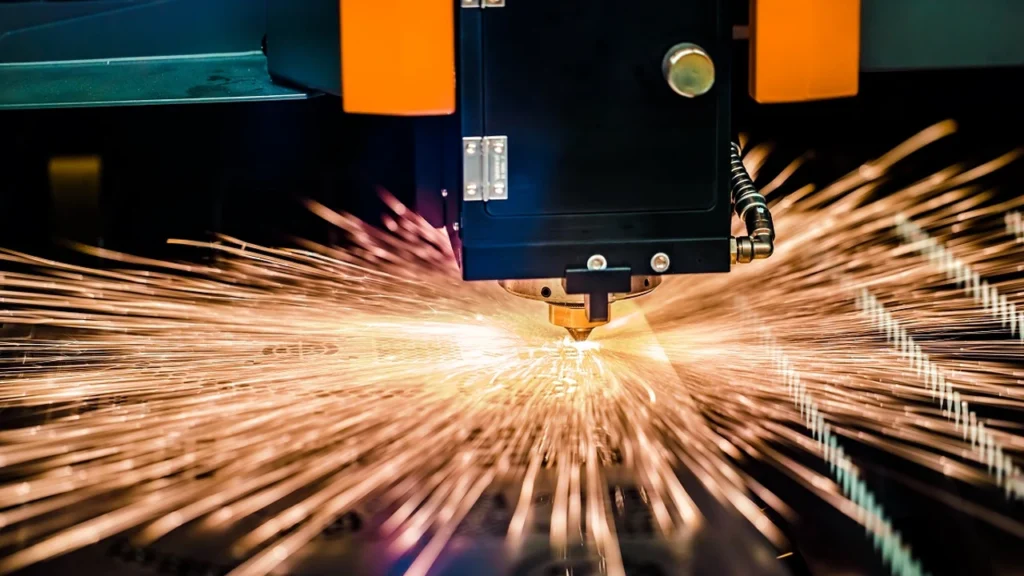
Limitations and Challenges in Machining
Although machining offers unmatched precision and flexibility, it also comes with its own set of limitations. Understanding these challenges is essential for making informed decisions about where and how machining should be applied. In this section, we explore the main issues manufacturers face when using machining processes.
Tooling Costs and Maintenance
Cutting tools are essential to any machining process, but they come with ongoing costs. High-speed operations, especially on hard materials like titanium or Inconel, lead to faster tool wear. Worn tools can reduce part accuracy, harm surface finish, and even cause machine damage.
Monitoring tool life, scheduling replacements, and using tool management systems are necessary to keep operations running smoothly. These strategies improve efficiency but also add complexity and maintenance costs. For small workshops, the cost of replacing cutting tools and managing tool systems may be a barrier to scaling up operations.
Material Waste
Machining is a subtractive process, which means it removes material from a larger block to create the desired shape. Compared to forming or additive manufacturing, this leads to higher levels of scrap.
While some materials like aluminum can be recycled easily, others involve more effort or cost. For high-volume production, the waste generated becomes a concern, especially when machining expensive metals or composites.
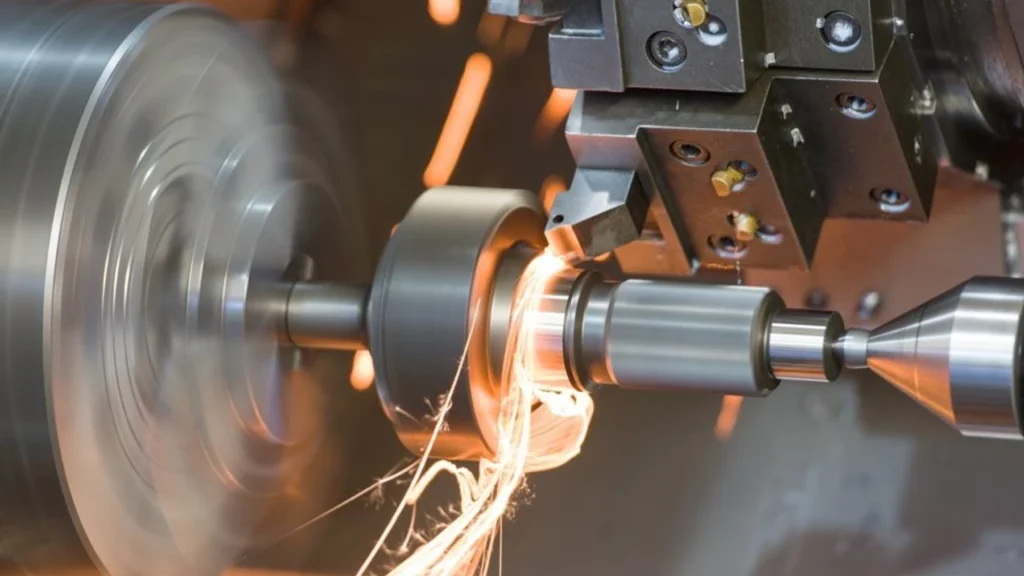
Energy Consumption
Machining processes often consume significant energy. This includes not only spindle power but also coolant systems, chip conveyors, and tool changers. Continuous operation of high-speed machines can raise both electricity usage and cooling requirements.
Energy-efficient machining strategies and green machining methods are growing in popularity, but they may involve higher upfront investment or longer learning curves for operators.
Requires Skilled Labor
Despite automation, machining still depends on skilled workers to program, set up, and maintain equipment. CNC programming, tool path optimization, and material handling all require training and experience.
Finding qualified operators can be a challenge, especially in regions with labor shortages or where technical education is limited. Mistakes during setup or programming can lead to scrap, downtime, or machine damage.
Limited Suitability for Complex Internal Shapes
While 5-axis machining offers excellent flexibility, machining still struggles with certain internal geometries. Deep internal cavities, thin walls, or curved internal channels may require multiple setups or special tooling.
In some cases, processes like casting, additive manufacturing, or electrochemical machining may offer better solutions. Selecting machining for the wrong geometry can result in poor efficiency or compromised quality.
Slower for Very High Volume Production
For extremely high-volume, low-variation products, methods like injection molding or stamping may be faster and more cost-effective. Machining shines in precision, but not always in speed when compared to dedicated tooling systems.
Although automated CNC machining lines can produce thousands of parts, cycle times per piece are often longer than those of mass-production alternatives. For simple shapes with minimal tolerance needs, machining may not be the most efficient option.
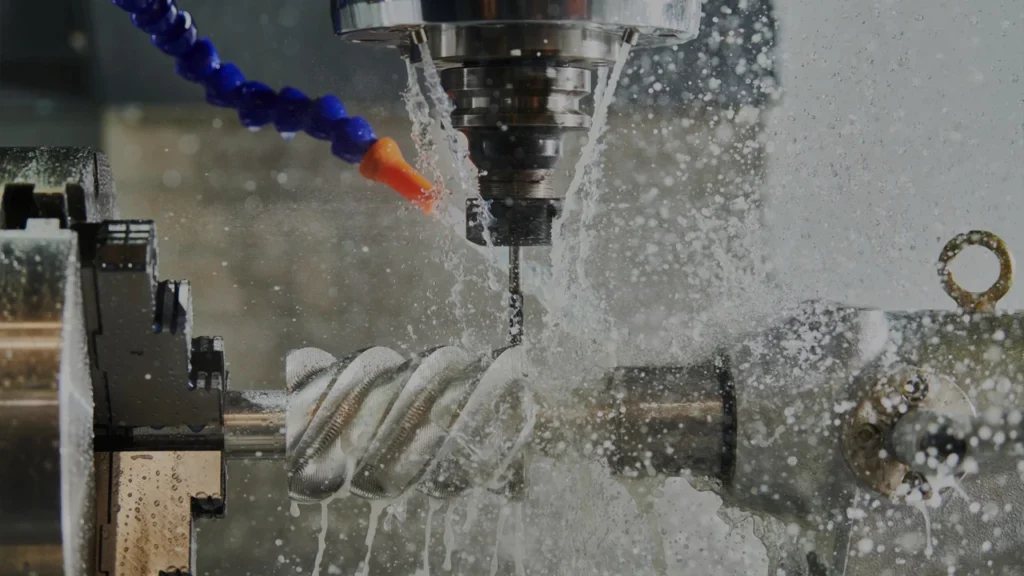
The Future of Machining
Machining is evolving rapidly. New technologies are changing how parts are made, how machines are managed, and how factories operate. For manufacturers, understanding these changes is key to staying competitive.
Smarter CNC Systems
Modern CNC machines are becoming more intelligent. With real-time sensors, feedback systems, and advanced software, machines can now detect tool wear, monitor temperature, and adjust parameters automatically. This shift reduces downtime and improves accuracy.
CNC machining is no longer just about speed. It’s about smart decisions. Machines assist in process control, quality tracking, and even remote diagnostics—making production more stable and predictable.
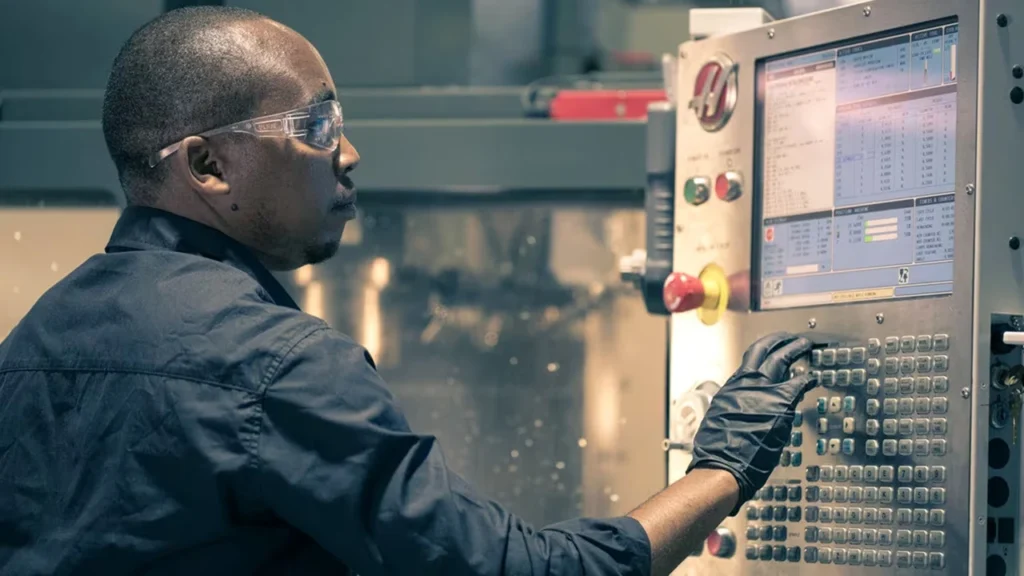
Automation and Unmanned Production
Labor shortages and cost pressures are pushing factories to automate more steps of the machining process. From robotic loading arms to tool changers and pallet systems, automation helps increase consistency and reduce labor costs.
Lights-out machining—where machines run unattended overnight—is becoming more common. This requires reliable systems with fail-safes, smart alarms, and high tool capacity to ensure continuous operation without manual intervention.
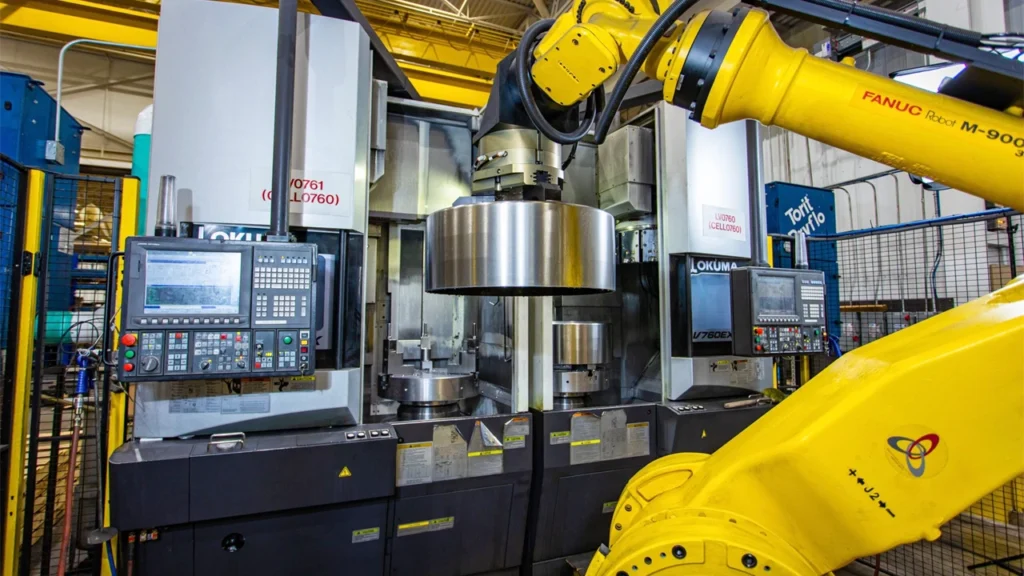
Digital Integration and Industry 4.0
Smart manufacturing connects machines, software, and data in a single digital ecosystem. This allows real-time visibility into production, predictive maintenance, and better planning of resources and materials.
Machining equipment increasingly connects with ERP systems, MES platforms, and cloud analytics tools. These integrations help convert machine data into actionable insights for decision-makers.
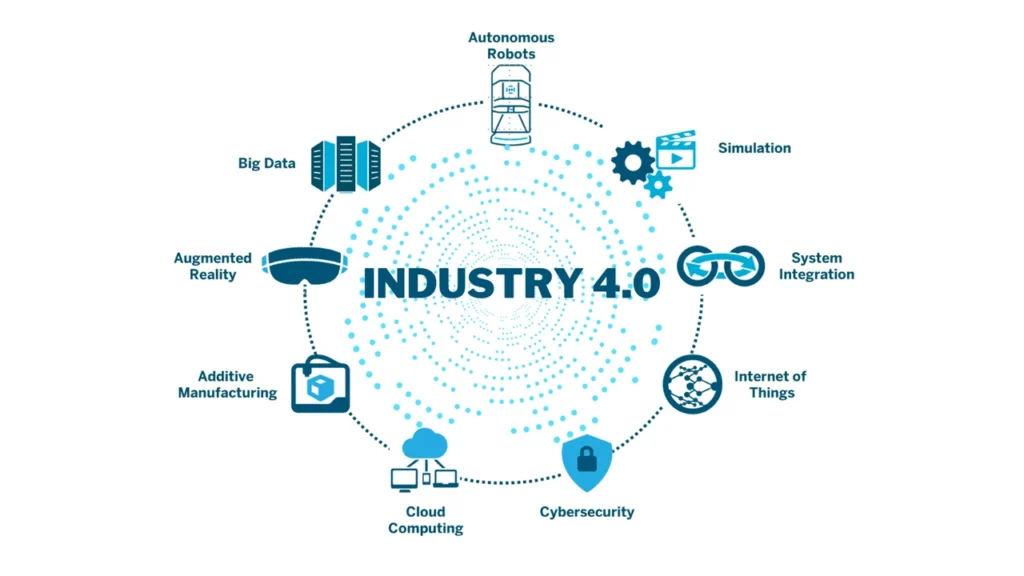
Energy Efficiency and Green Machining
Sustainability is becoming a core requirement in manufacturing. More companies aim to reduce energy use, minimize waste, and adopt cleaner production methods.
In machining, this includes optimizing tool paths, improving coolant efficiency, and extending tool life. Cryogenic machining, dry cutting, and energy-efficient motors are gaining traction as more businesses shift toward greener operations.

Smart Manufacturing and Digital Twins
Machining is becoming smarter with the help of simulation and digital tools. Digital twins—virtual models of machines or processes—let manufacturers test setups, adjust parameters, and spot issues before actual cutting begins.
These tools reduce trial-and-error, improve accuracy, and save time. Combined with sensors and real-time data, they help optimize tool paths and avoid mistakes during machining.
As technology evolves, digital twins and smart monitoring systems will play a key role in making machining faster, safer, and more efficient.
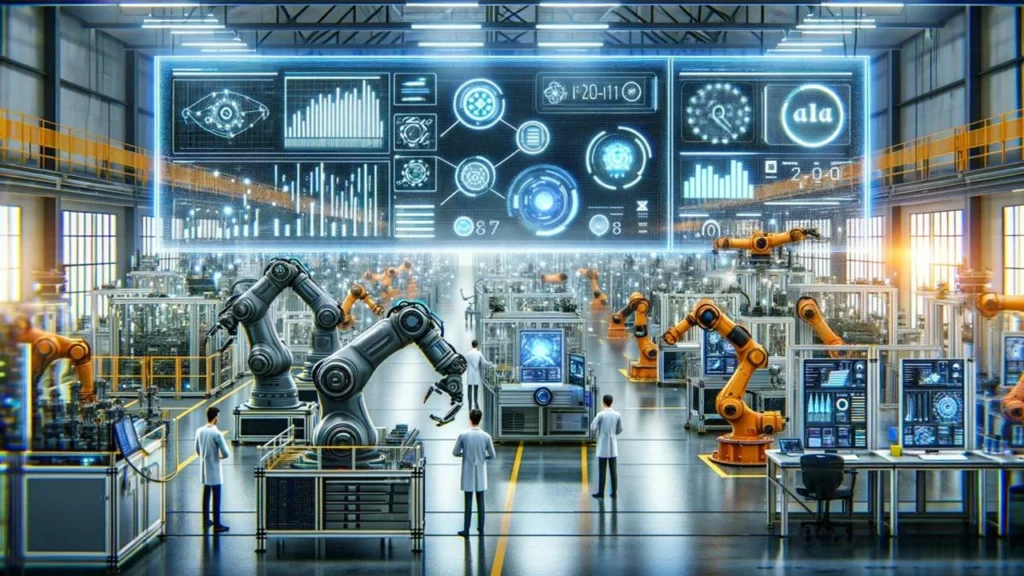
Machining is clearly moving toward smarter, cleaner, and more connected systems. While many of these technologies are still developing, they point to a future where precision and efficiency go hand in hand. Staying informed is the first step to being ready.
Conclusion: What Is Machining
Machining is more than a technical process—it’s a foundation of modern manufacturing. From shaping raw materials to enabling high-precision components, machining supports a wide range of industries with its adaptability, accuracy, and evolving technology. As production demands grow more complex, understanding machining helps decision-makers navigate materials, equipment, and strategies with greater confidence.
Looking ahead, it’s clear that machining will continue to transform. Smarter systems, digital simulation, and green machining practices are redefining how precision parts are made. For companies involved in CNC machining, this means staying aligned with both industrial needs and innovation trends.
Whether it’s a machining center, lathe, milling machine, or a custom solution for niche applications, choosing the right equipment partner matters just as much as choosing the right process. As a trusted manufacturer of CNC machine tools, Rosnok provides precision-focused, reliable solutions tailored to meet the evolving needs of modern industry. For those preparing for the future of machining, Rosnok is here to support every step forward.

FAQ
Before we conclude, here are some frequently asked questions to help clarify practical concerns and provide additional value for readers exploring machining and its applications.
What’s the difference between machining and fabrication?
Machining removes material from a workpiece using cutting tools, while fabrication involves processes like welding, bending, and assembling materials. Machining is subtractive; fabrication is often additive or formative.
Can machining be used on plastic or composite materials?
Yes. Machining works well with plastics, composites, and even ceramics. However, parameters like tool type, cutting speed, and coolant selection must be adjusted to prevent material damage or deformation.
How do I choose between different machining processes?
Selection depends on part geometry, material, required tolerance, and production volume. For example, turning is ideal for cylindrical parts, while milling suits flat or complex shapes. EDM is used for hard-to-machine metals or internal profiles.


